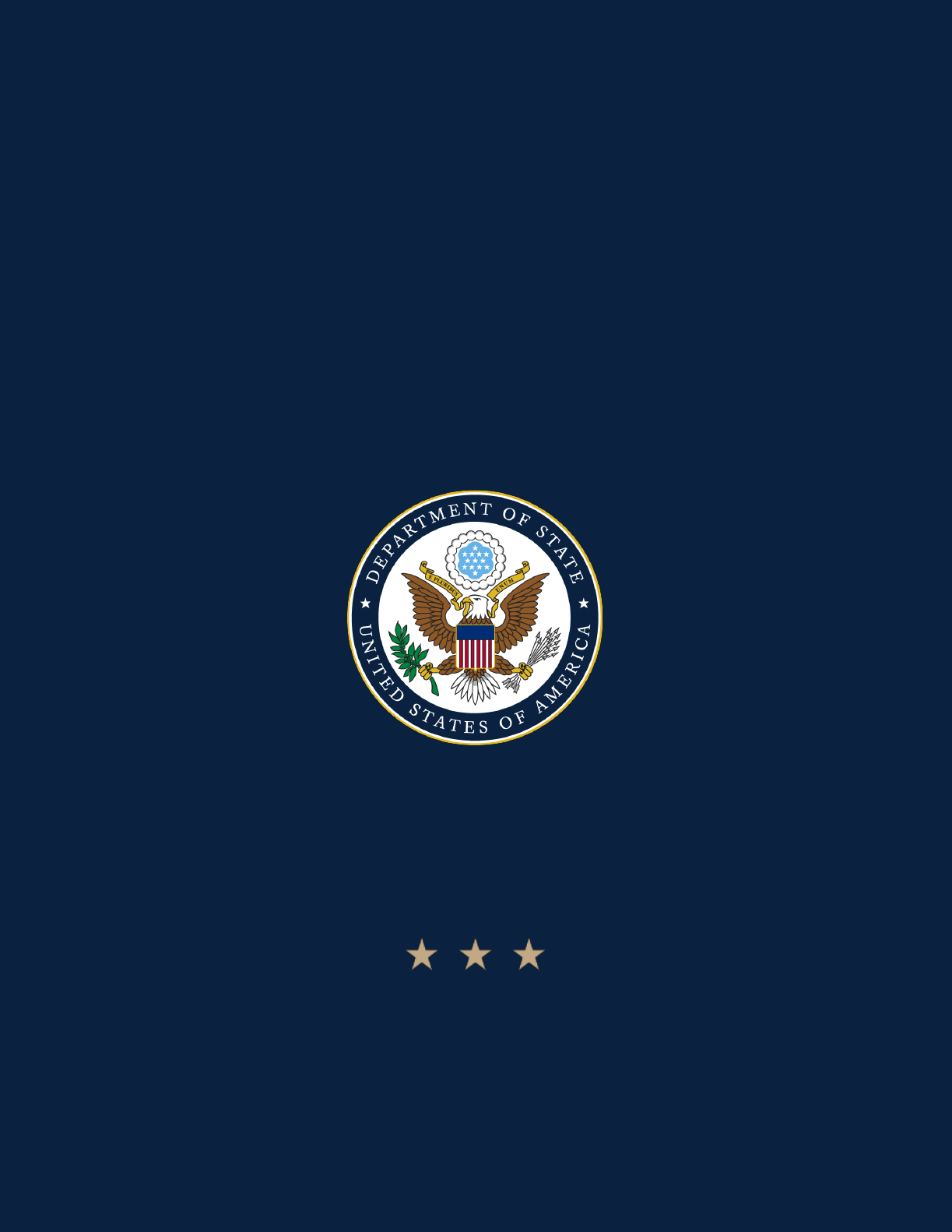
LEARNING AGENDA
2022-2026
U.S. DEPARTMENT of STATE
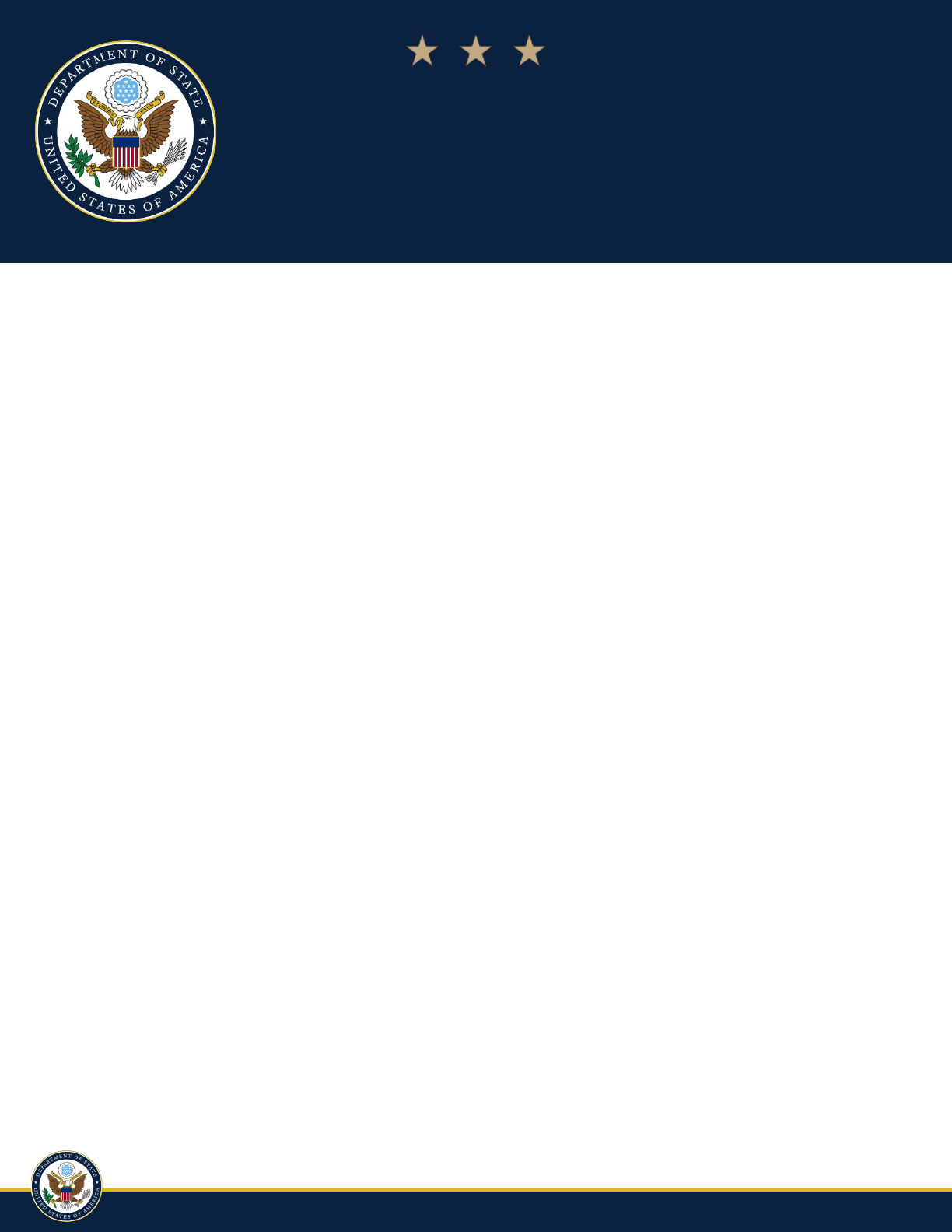
UNCLASSIFIED 2
TABLE
of
CONTENTS
EXECUTIVE SUMMARY ........................................................................................................................... 3
BACKGROUND ............................................................................................................................................. 4
Stakeholder Engagement .............................................................................................................................. 4
Internal Stakeholder Engagement ........................................................................................................... 4
External Stakeholder Engagement .......................................................................................................... 5
Timing ............................................................................................................................................................. 5
PRIORITY QUESTIONS ........................................................................................................................... 6
1. How can the State Department improve the effectiveness of its diplomatic interventions to
better advance foreign policy objectives? ................................................................................................... 8
2. How can the Department improve the effectiveness and sustainability of its foreign
assistance efforts?......................................................................................................................................... 12
3. How can the Department’s tools best address the climate crisis? ............................................... 17
4. How can the Department better respond to unpredictable international events and
emergencies such as global pandemics? ................................................................................................... 20
5. How should the Department confront the rise of global disinformation and its negative
effects on the security and prosperity of the United States? ................................................................. 24
6. How can the Department balance customer service expectations with national security and
cost-effectiveness to provide a better customer service experience to U.S. citizens, and to foreign
nationals seeking visas? ............................................................................................................................... 28
7. How can the Department more effectively analyze and manage risks to promote a safe and
secure working environment for its staff and partners?......................................................................... 31
8. How can the Department utilize performance management and evaluation data and data
systems to improve decision-making? ...................................................................................................... 35
APPENDIX A: LEARNING AGENDA ALIGNMENT TO 2022-2026 DEPARTMENT OF
STATE AND USAID JOINT STRATEGIC PLAN ........................................................................... 38
U.S. DEPARTMENT of STATE

UNCLASSIFIED 3
EXECUTIVE SUMMARY
The Foundations for Evidence-Based Policy Making Act of 2018 (P.L. 115-435) (“Evidence Act”)
requires federal agencies to develop a “learning agenda” – a systematic plan to answer a set of
policy-relevant questions critical to achieving the agency’s strategic objectives. The Department of
State sees its learning agenda as a way to directly enhance U.S. foreign policy in the twenty-first
century, bolstering the Secretary of State’s modernization efforts. To develop its learning agenda, the
Department of State undertook a structured, rigorous, and collaborative process involving experts
inside and outside of the U.S. government. The goal of this learning agenda is to advance the work
of the Department – increasing the impact of U.S. foreign policy. This learning agenda closely aligns
with the four-year State-USAID Joint Strategic Plan (JSP) and will be revisited annually to
demonstrate progress in answering the questions asked in the State Department Learning Agenda.
To develop the Learning Agenda’s eight questions, the Department consulted widely with internal
and external stakeholders. The Learning Agenda outlines a methodological approach for answering
each question. This plan also describes how the Department will leverage data analytics and share its
learning insights with all stakeholders. The Department plans to answer these eight ambitious
questions between 2022 and 2026:
1. How can the State Department improve the effectiveness of its diplomatic interventions to
better advance foreign policy objectives?
2. How can the Department improve the effectiveness and sustainability of its foreign
assistance efforts?
3. How can the Department’s tools best address the climate crisis?
4. How can the Department better respond to unpredictable international events and
emergencies such as global pandemics?
5. How should the Department confront the rise of global disinformation and its
negative effects on the security and prosperity of the United States?
6. How can the Department balance customer service expectations with national security and
cost-effectiveness to provide a better customer service experience to U.S. citizens, and to
foreign nationals seeking visas?
7. How can the Department more effectively analyze and manage risks to promote a safe and
secure working environment for its staff and partners?
8. How can the Department utilize performance management and evaluation data and data
systems to improve decision-making?
Together, these questions will help the Department advance America’s foreign policy, improve its
diplomacy and foreign assistance, and modernize to accomplish its twenty-first century mission.
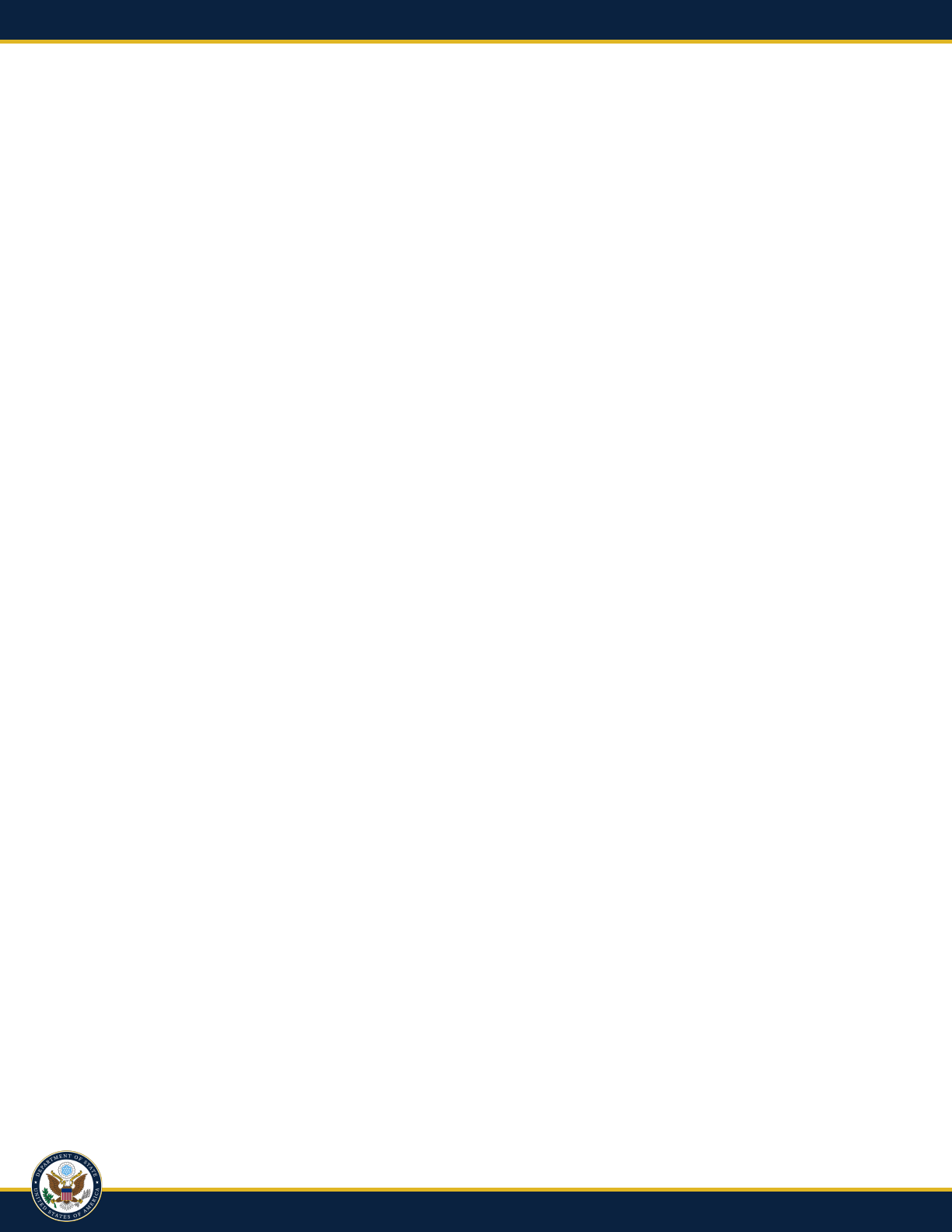
UNCLASSIFIED 4
BACKGROUND
The Department of State’s leadership convened a team of internal, multidisciplinary experts from
across the Department to launch the Department’s first Learning Agenda process. Several core
principles guided the development and proposed activities of the Learning Agenda:
• Evidence-based learning can enhance activities across the Department of State and support
the Secretary’s modernization agenda.
• Though academics and other analysts study the efficacy of U.S. diplomacy, often after the
fact, the Department should more regularly evaluate how, why, and under what conditions
diplomatic interventions are most effective.
• The Department learns best when it brings together multi-disciplinary foreign policy experts
and practitioners from both inside and outside of the U.S. government.
• Learning must often occur at the country-specific, regionally specific, and sector specific
levels to best inform diplomatic and foreign policy decision-making.
• Many Department activities, such as diplomatic engagements, programmatic activities, or
consular affairs and American citizen services, are repeated around the world every day.
Therefore, it is useful to understand how previous iterations of these activities, even those
conducted in different contexts or geographies, can inform future efforts.
• The type of evidence that can inform and improve the Department’s learning is varied.
Useful evidence includes data, metrics, program evaluations, and internal documentation of
U.S. foreign policy efforts – from diplomatic cables to press statements. Therefore, learning
activities should take a holistic view of what constitutes evidence in the Department and
evidence should be chosen that is appropriate to each learning activity.
• The Department should build upon bureaus’ progress to improve learning and knowledge
management. Many individual bureaus at the Department have taken on independent efforts
to assess their own activities; a whole of Agency Learning Agenda should integrate and
elevate learning efforts across the bureaus – in order to shape strategic decision-making.
• Evidence goes beyond metrics. The Department has begun and will continue many learning
activities such as collecting data in various forms and conducting evaluations and studies.
The next step of modernization and learning entails analyzing and translating this data, while
upholding science and data integrity principles, into evidence that can usefully support
decision-making and decision-makers at all institutional levels.
Stakeholder Engagement
Internal Stakeholder Engagement
The Department’s Evidence Act team invited all bureaus to participate in working group sessions on
the learning agenda. Representatives from 40 of the Department’s 58 bureaus and independent
offices participated in the working group and identified a list of potential learning needs and created
a short list of draft Learning Agenda questions. From that short list, the Department’s senior
leadership selected the core Learning Agenda questions that cover both the core activities of the
Department and central and emerging policy priorities. These questions touch on the major
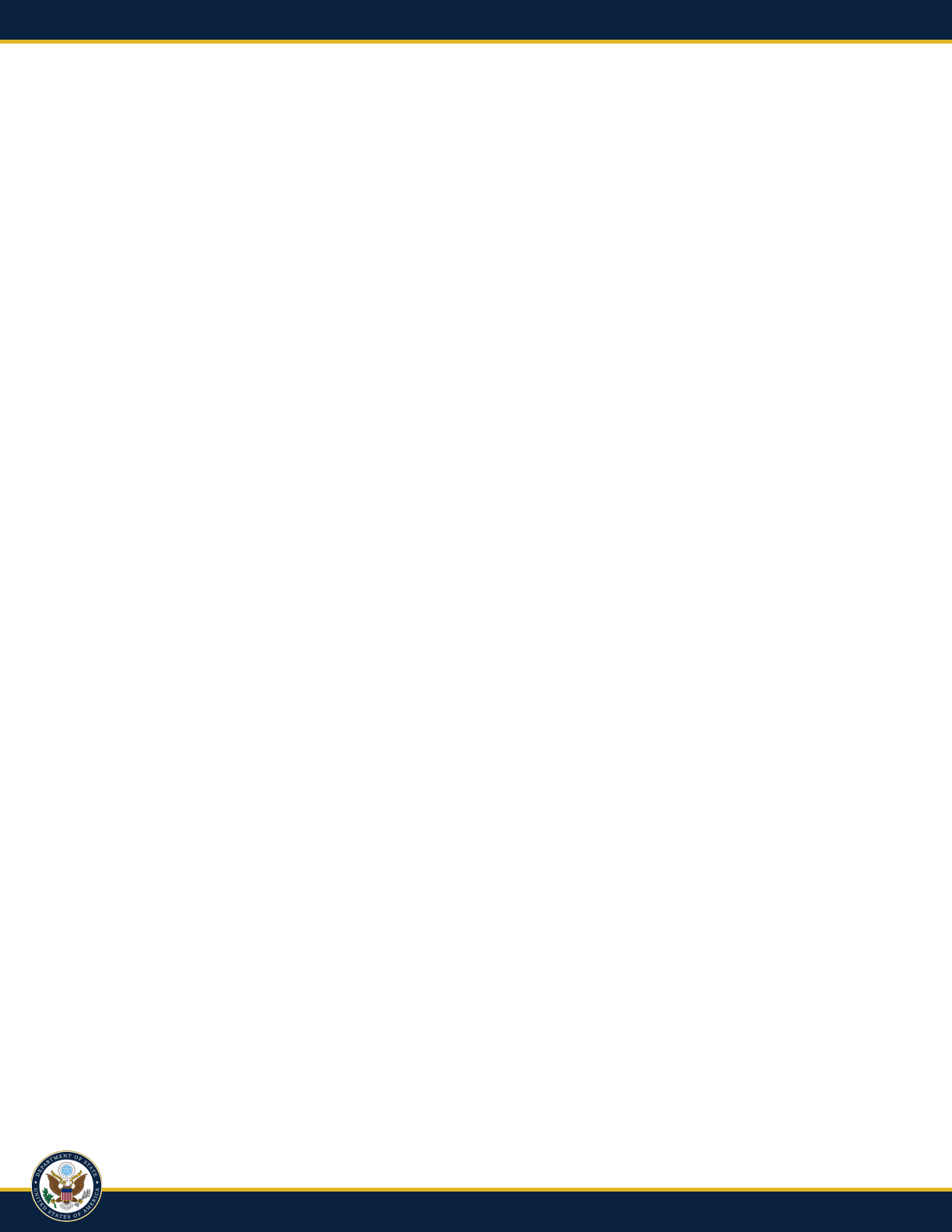
UNCLASSIFIED 5
priorities of the Secretary of State and Biden-Harris administration, reflected in the Interim National
Security Strategic Guidance and the Joint Strategic Plan. The Evidence Act team then convened
question teams to plan feasible learning activities to match each question. Policy experts collaborated
closely with specialists in monitoring, evaluation, and data to address each core question and
determine what type of data and methodologies could be used to answer each question
Question teams played an integral role in generating an actionable learning agenda. They refined the
sub-questions associated with each core question, ensured questions were answerable, and identified
learning needs with the greatest relevance to decision-making. The question teams conceptualized
the activities, data, tools and methods, timing, and challenges and mitigation strategies needed to
provide an evidence base. Teams engaged with the Department’s international posts, implementing
partners, and the Department’s key interagency partners, such as the U.S. Agency for International
Development (USAID), to form their plans. Over the next four years, the question teams will
organize and coordinate the activities needed to respond to their assigned question(s) and report on
annual progress.
External Stakeholder Engagement
The Department reached out to external stakeholders – including think tanks, universities,
associations of leading NGOs, and implementing partners/grant recipients – to solicit inputs on the
Learning Agenda. These stakeholders identified evidence gaps, available evidence outside of the U.S.
government that could help to fill those gaps, and partner organizations interested in partnership
with the Department on its Learning Agenda. Throughout the four-year lifecycle of the Learning
Agenda, the Department’s question teams will continue to partner with external organizations and
research institutions.
Timing
The timeline to complete the Learning Agenda activities will vary according to data availability,
existing internal processes, including strategy review sessions, and prioritization of work efforts. The
timing of activities is intended to coincide with the timeline of the Department's Joint Strategic Plan.
The Learning Agenda will be reviewed annually and updated as needed.
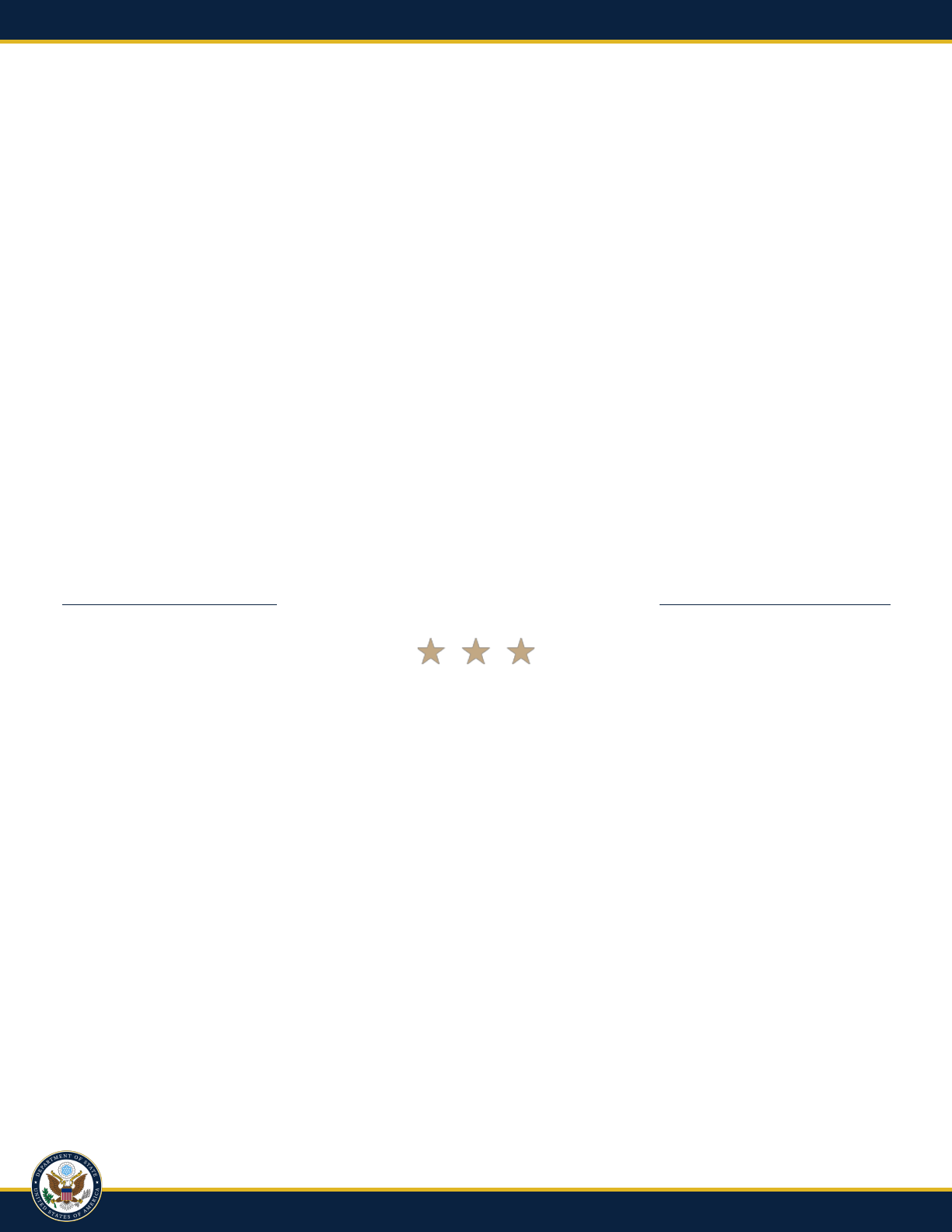
UNCLASSIFIED 6
PRIORITY QUESTIONS
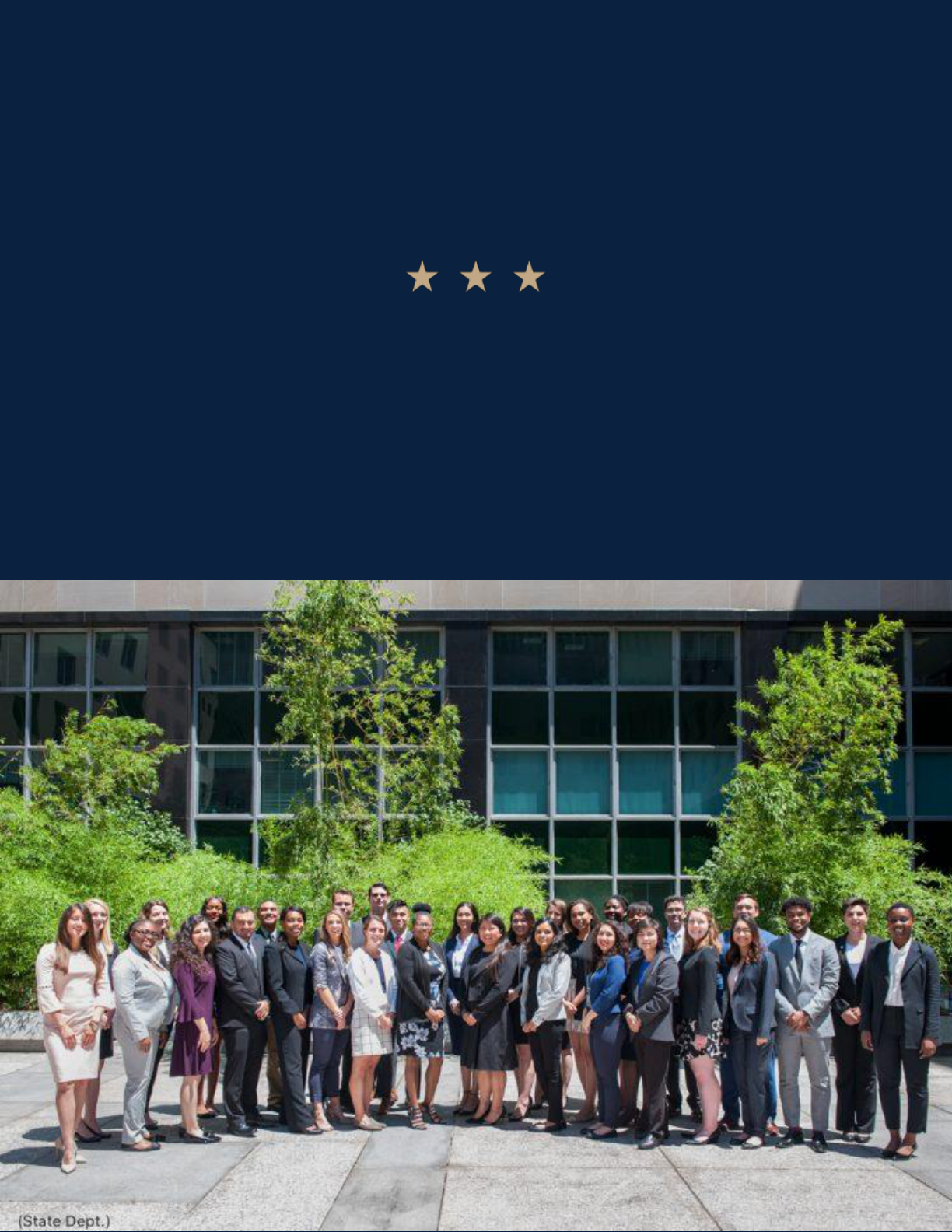
UNCLASSIFIED 7
Question One:
How can the State Department improve the
effectiveness of its diplomatic interventions to better
advance foreign policy objectives?
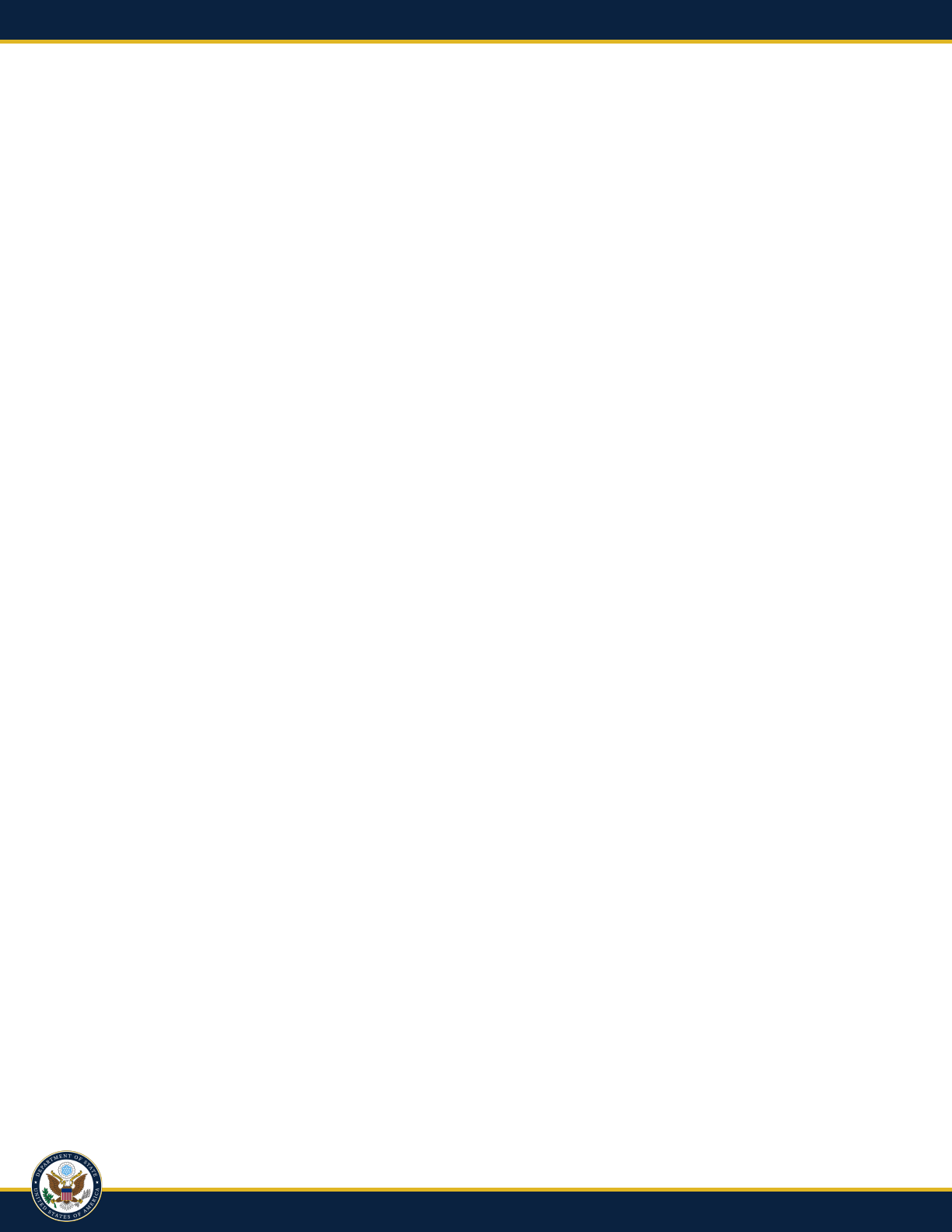
UNCLASSIFIED 8
1. How can the State Department improve the effectiveness of its
diplomatic interventions to better advance foreign policy objectives?
Diplomatic interventions are the foundation of the Department of State’s work. The Department
must better understand under what conditions diplomacy is most effective in advancing U.S.
national security and foreign policy. The Department conducts diplomacy across every continent on
every issue that affects the global community. Department officials engage in both public and
private diplomatic efforts, across many media and contexts. To define the scope of learning
activities, our evidence team generated five sub-questions:
• 1.1. How can bureaus and posts improve their ability to measure and track the effectiveness
of senior leader diplomatic engagement – at the Secretary, Deputy Secretary, and
Ambassadorial levels – in advancing U.S. foreign policy objectives?
• 1.2. Which diplomatic interventions in multilateral fora are effective for achieving targeted
U.S. foreign policy objectives?
• 1.3. How can bureaus and posts optimize the full range of public diplomacy tools to advance
foreign policy objectives?
• 1.4. How can bureaus and posts optimize public-private partnerships to better advance U.S.
national interests?
• 1.5 How can bureaus and posts improve their ability to measure and track the effectiveness
of diplomatic engagements in promoting equity for underserved and underrepresented
communities?
Evidence Gathering Activities: The Department is planning the following activities to answer
these sub-questions.
1.1. How can bureaus and posts improve their ability to measure and track the effectiveness of
senior leader diplomatic engagement – at the Secretary, Deputy Secretary, and Ambassadorial levels
– in advancing U.S. foreign policy objectives? Our efforts will begin with improving the
Department’s ability to measure and track the effectiveness of senior leader diplomatic engagements
in advancing U.S. foreign policy objectives. In addition to categorizing different subtypes of senior
leader diplomatic engagements, we will assess the current methods that the Department’s regional
bureaus and posts (embassies and consulates) used for measuring and tracking effectiveness of these
meetings. We will establish a plan to study outcomes of these senior leader engagements –
particularly under what conditions these engagements led to foreign policy progress on a key issue.
We will pursue a mixed methods approach involving quantitative and qualitative methods, including
in-depth case studies using process tracing. We will consult on our study set-up, methods, and
findings with focus groups at posts, as well as with the Foreign Service Institute and the Office of
the Historian.
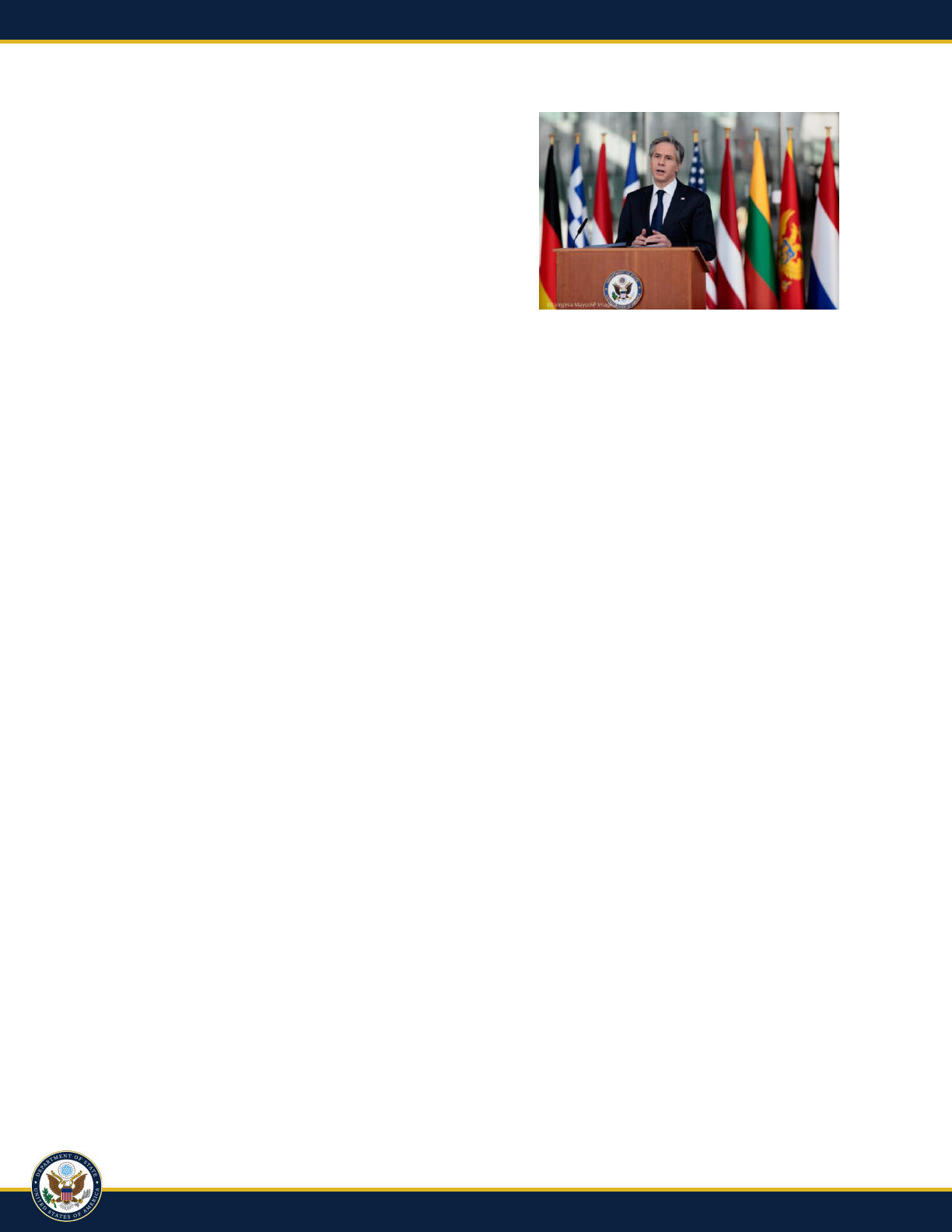
UNCLASSIFIED 9
1.2. Which diplomatic interventions in multilateral fora
are effective for achieving targeted U.S. foreign policy
objectives? To measure and analyze the effectiveness of
diplomatic interventions in multilateral fora like the
United Nations, the Department will identify the range
of multilateral activities that occurred within a specific
timeframe, including the top-line goals and objectives
they were intended to accomplish. Working with experts
on multilateral diplomacy, the group will decide on
appropriate methodologies and metrics that can be used to evaluate their outcomes. State will then
conduct a study, including a series of workshops, to determine where gaps in current multilateral
diplomatic assessment efforts exist and how to address them by developing new processes,
methodologies, or metrics.
1.3. How can bureaus and posts optimize the full range of public diplomacy tools to advance foreign
policy objectives? To assess its public diplomacy tools, the Department will review existing internal
and external data sources that summarizes the efficacy and optimal use of these tools for: 1) digital
communication campaigns; 2) short-term and long-term cultural exchanges; 3) media literacy and
journalism programs; and 4) methodological approaches to evaluating public diplomacy
performance. With input from the U.S. Advisory Commission on Public Diplomacy, this review will
also rely on interviews with public diplomacy practitioners and experts to identify the most salient
areas for improvement and specific next steps.
1.4. How can bureaus and posts optimize public-private partnerships to better advance U.S. national
interests? To optimize public-private partnerships to better advance U.S. national interests, State will
conduct a meta-analysis of public-private partnership (PPP) case studies. This meta-analysis will
evaluate the effectiveness of State Department PPPs to identify best practices in enhancing
diplomatic and development outcomes and cultivating cross-sector relationships to advance U.S.
foreign policy goals. This will include case studies produced through the Diplomacy Lab public-
private partnership program. Diplomacy Lab is a public-private partnership that enables the State
Department to harness research by students and faculty experts at colleges and universities across
the United States. Meta-analysis results will be used to both understand the role of PPPs in
addressing complex global challenges and inform mission-level planning for public-private sector
engagement in areas or themes of mutual interest to U.S. foreign policy and U.S. private sector
organizations. Through consultation with regional bureaus and other stakeholders, State will
collaborate with posts to determine which U.S. private sector entities might have relationships in-
country, regionally, or at the state and local levels that missions could build on to advance U.S.
national interests. Lessons learned from these exercises will be incorporated into the new public-
private partnership training course that is expected to launch for Department personnel in early
2022.
1.5. How can bureaus and posts improve their ability to measure and track the effectiveness of
diplomatic engagements in promoting equity for underserved and underrepresented communities?
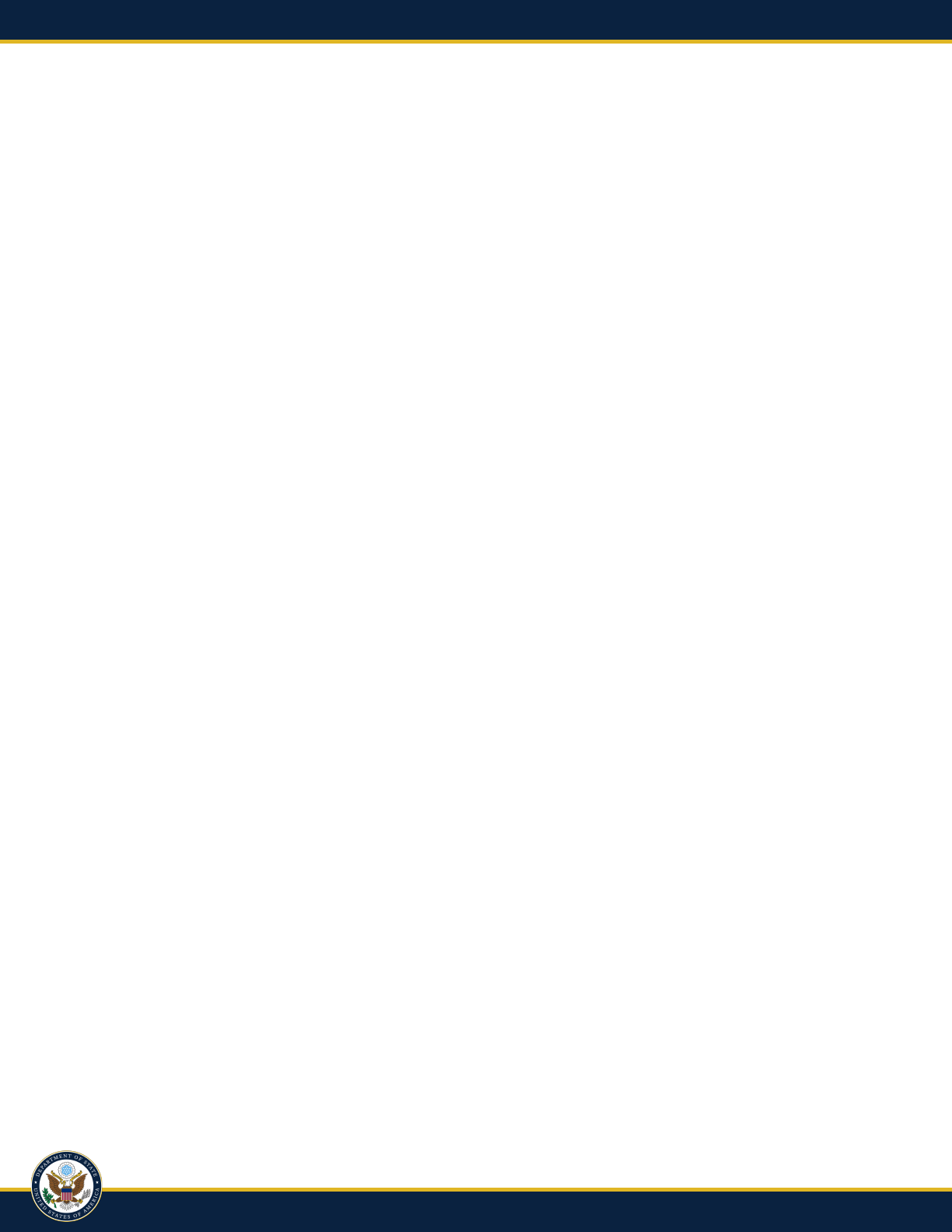
UNCLASSIFIED 10
The Department is in the process of identifying learning activities to respond to how bureaus and
posts can improve their ability to measure and track the effectiveness of diplomatic engagements in
promoting equity for underserved and underrepresented communities.
Data, Tools, and Methods: To gather data, the team will rely on recent literature reviews from
academic and other non-governmental sources; relevant national- and agency-level guidance and
strategies, including relevant Joint Regional Strategies (JRS), Functional Bureau Strategies (FBS),
Integrated Country Strategies (ICS); and the Evaluation Management System (EMS), which serves as
the system of record for all evaluations funded by diplomatic engagement funds, and diplomatic
cables. The team will collect information from multilateral fora, including vote records at key
international organizations, notes from high-level department meetings, private and public
diplomatic statements, and funding priorities. Bureaus and offices will conduct data calls and
continue to collect diplomatic data on key case studies under review in order to understand the
efficiency, effectiveness, and relevance of diplomatic interventions in various environments.
Regarding promoting equity for underserved and underrepresented communities, data collection will
be determined once learning activities are identified.
Challenges and Mitigation Strategies: To mitigate the challenges posed by limitations in
resources and skillsets, a third-party evaluator may lend support to staff and faculty from multiple
offices and bureaus studying evaluations to arrive at meaningful analysis. Translating program-
specific results to higher-level findings may be challenging based on available data. The Department
anticipates using a mixed methods approach to mitigate this challenge, as well as triangulating data
sources to overcome gaps or biases. Dissemination strategies will be designed during the evidence-
building process to improve research accessibility for program staff and decisionmakers, as well as
Department leadership. With the lingering effects of COVID-19 pandemic, travel for data collection
purposes may continue to pose a problem. The Department will work with its implementing
partners to continue to utilize and develop innovative data collection practices that keep participants
safe.
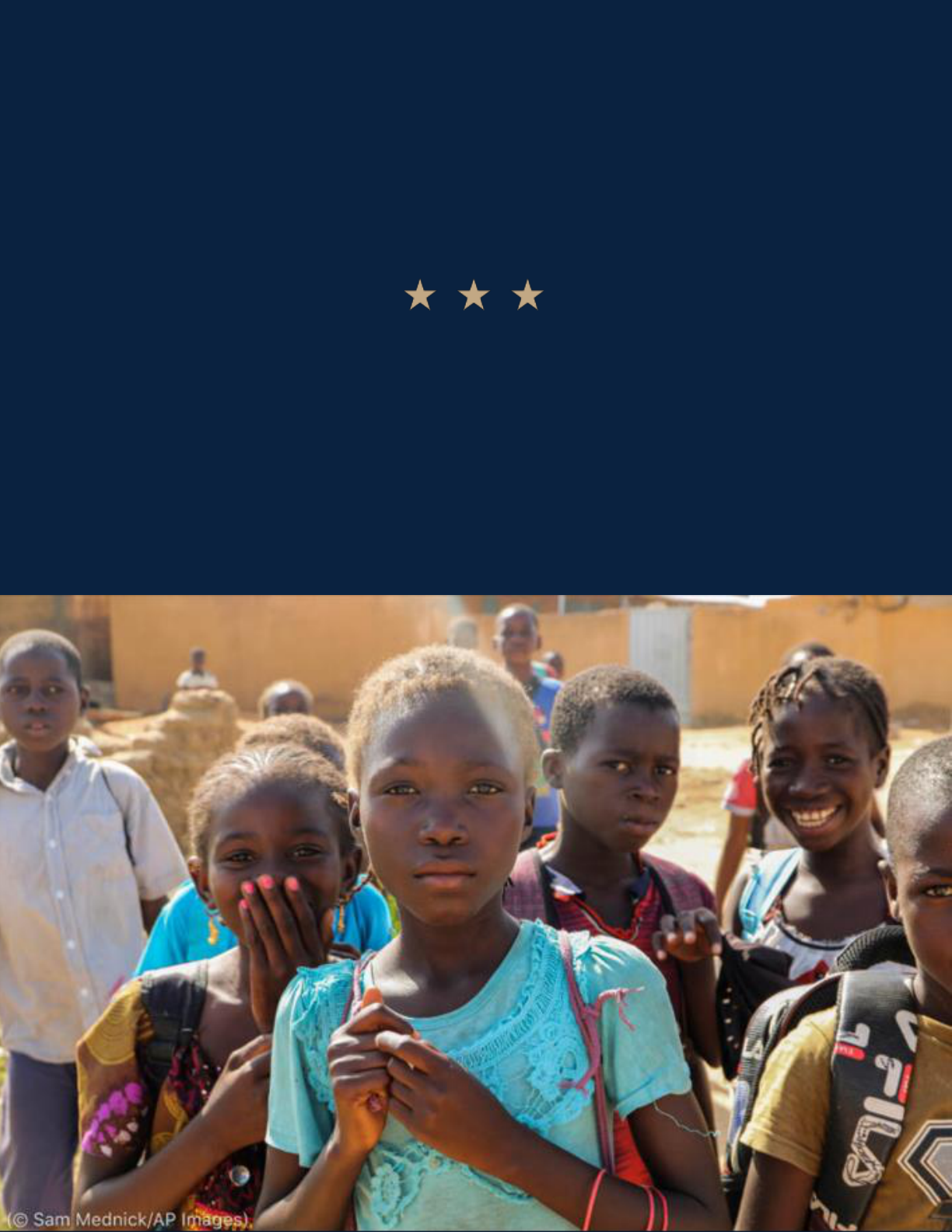
UNCLASSIFIED 11
Question Two:
How can the Department improve the effectiveness and
sustainability of its foreign assistance efforts?
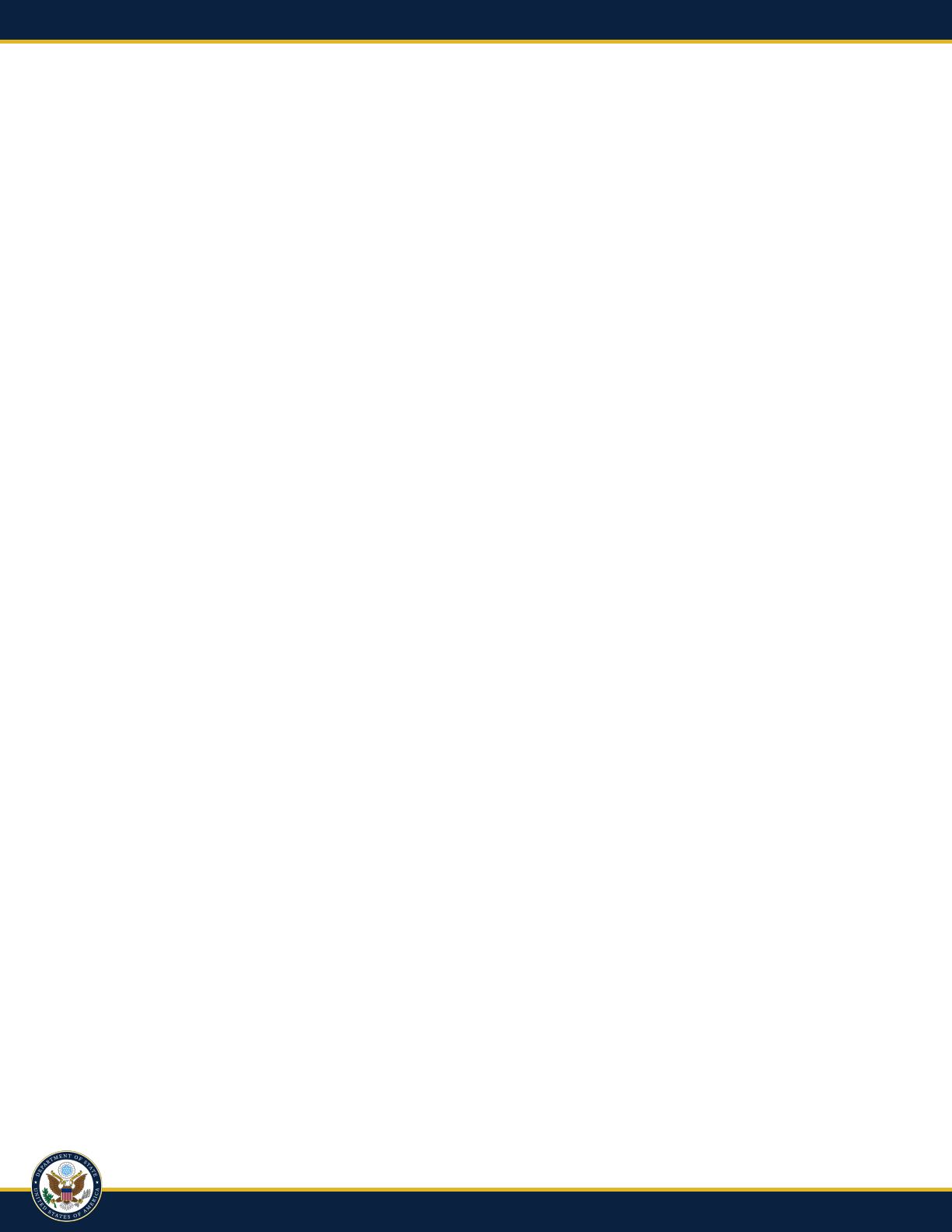
UNCLASSIFIED 12
2. How can the Department improve the effectiveness and sustainability
of its foreign assistance efforts?
One of the Department’s most critical functions is to plan for and oversee the use of approximately
$40 billion in annual State and USAID programs paid for with foreign assistance funds. U.S. foreign
assistance advances U.S. values and strategic interests globally with allies and partners, strengthening
security; supporting democracy and human rights; and promoting an inclusive international
economic system that provides opportunities for all. The USAID Learning Agenda promotes the
generation and use of evidence as USAID advances the Administration’s highest priorities, including
responding to the climate crisis, building resilience to shocks including COVID-19, combatting
authoritarianism and corruption, addressing the root causes of migration, and strengthening
operational effectiveness to catalyze inclusive and locally-driven development. The State
Department’s Agency Learning Agenda also includes a study of foreign assistance, given the
Department’s role in directing, managing, overseeing, and improving foreign assistance efforts
worldwide. The Department decided to scope its study of the effectiveness of U.S. foreign assistance
to four sub-sectors of assistance where foreign policy shifts and changing global landscapes over the
past decade have necessitated shifting foreign assistance strategies: economic development; security
sector assistance; democracy, rights, and governance assistance programs; and diversity, equity, and
inclusion assistance programs.
• 2.1. What types of State Department and USAID foreign assistance programs that seek to
enhance partners’ economic growth have made a sustainable effect in a partner's economic
development between 2014 and 2019? Where and under what conditions?
• 2.2. What factors have contributed to the success or shortcomings of State Department
efforts to help partners advance the capacity, accountability, and professionalism of their
security forces? How can the Department improve the effectiveness of its security sector
assistance programs?
• 2.3. Where and under what conditions has the State Department’s foreign assistance led to
short-term gains and longer-term effects in democracy, rights, and governance? What types
of approaches have had lasting effects and could be replicated or refined in future foreign
assistance strategies and programming?
• 2.4. What policies and practices can be most effective in strengthening the role of
underserved and underrepresented groups—at the intersections of race, ethnicity, religion,
sex, gender, ability, and age—in the formulation and implementation of foreign assistance
programs?
Evidence Gathering Activities: The Department is planning the following activities to answer
these sub-questions.
2.1. What types of State Department and USAID foreign assistance programs that seek to enhance
partners’ economic growth have made a sustainable effect in a partner's economic development
between 2014 and 2019? Where and under what conditions? To assess the sustainability of the
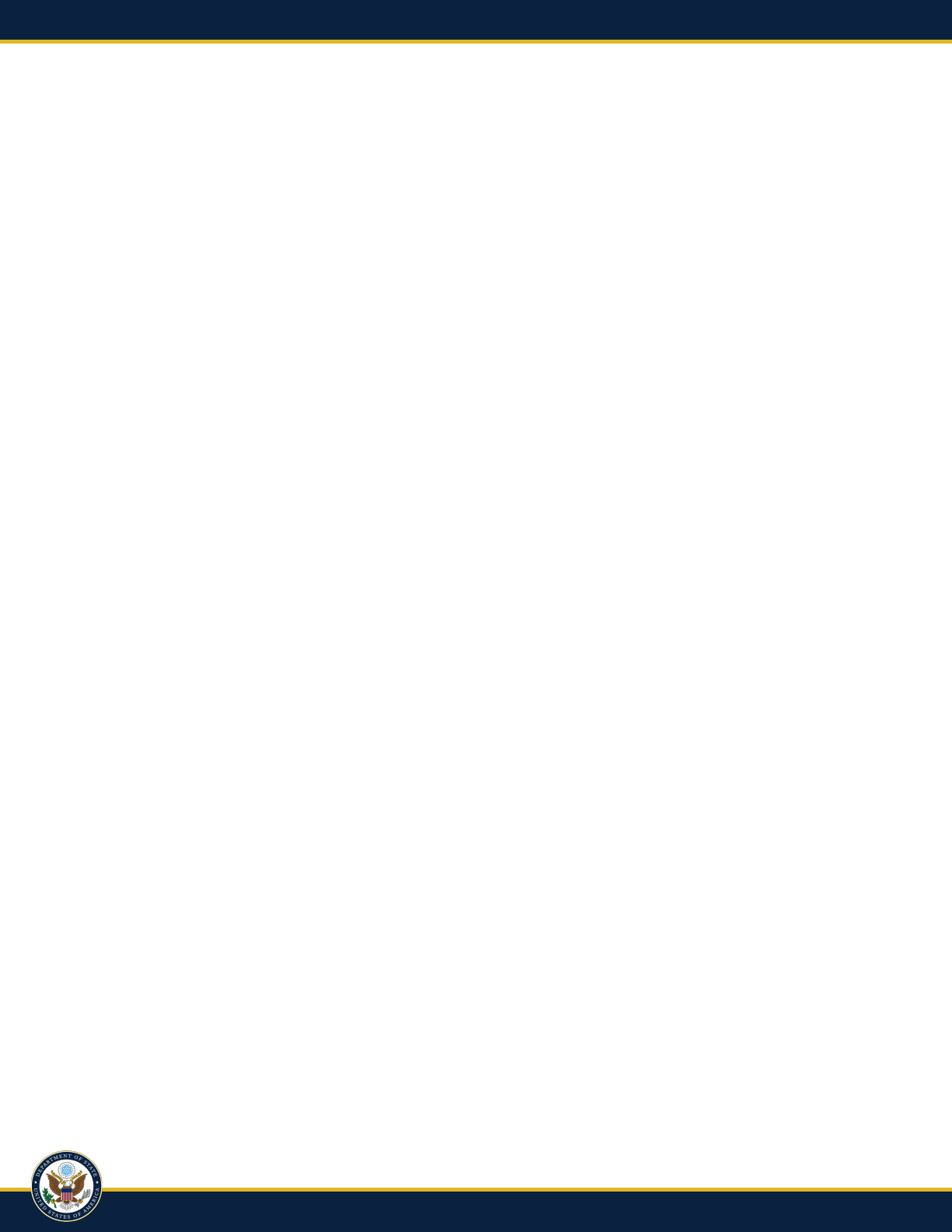
UNCLASSIFIED 13
Department’s economic development interventions, contingent upon funding, F will conduct a
meta-evaluation of State and USAID economic growth programs implemented between 2014 and
2019. The evaluation will identify the types of U.S. economic assistance that have made a sustainable
effect in a partner's economic development.
2.2. What factors have contributed to the success or shortcomings of State Department efforts to
help partners advance the capacity, accountability, and professionalism of their security forces? How
can the Department improve the effectiveness of its security sector assistance programs? The
Department plans to conduct research, evaluations, internal assessments, and analyses to explore the
factors that helped advance the capacity, accountability, and professionalism of our partner nations’
security forces. The Department will incorporate findings into programmatic guidance, internal
knowledge management platforms, and appropriate staff trainings. Evaluations will include (1) a new
pilot Security Cooperation Evaluation Framework to assess the strength of partners’ security sectors
and the efficacy of U.S. security assistance and engagement to contribute to policy outcomes and (2)
a study with the National Academy of Sciences to determine the “state of research” and highlight
promising areas to guide policing reform. This will examine how police practices affect different
populations, including underserved and/or marginalized communities.
2.3. Where and under what conditions has the State Department’s foreign assistance led to short-
term gains and longer-term effects in democracy, rights, and governance? What types of approaches
have had lasting effects and could be replicated or refined in future foreign assistance strategies and
programming? The Department will conduct research to understand the effectiveness of leveraging
foreign assistance to defend against authoritarianism, address and fight corruption, and promote
respect for human rights, with the aim to improve Department programming and strategy in
democracy, human rights, and governance. Activities will include evaluations, literature reviews,
assessments, and policy briefs on, among other topics, the short-term gains and long-term effects of
regime typology and democratic erosion on foreign assistance, impact and success in anti-corruption
programming, human rights documentation in closed societies, internet freedom, civic mobilization
and social movements, rule of law, and civil, voter and rights education. The Department will
incorporate findings into programmatic guidance, internal strategy decision-making, and
improvements to future program design, as well as share it with implementing partners and via
stakeholder workshops where feasible.
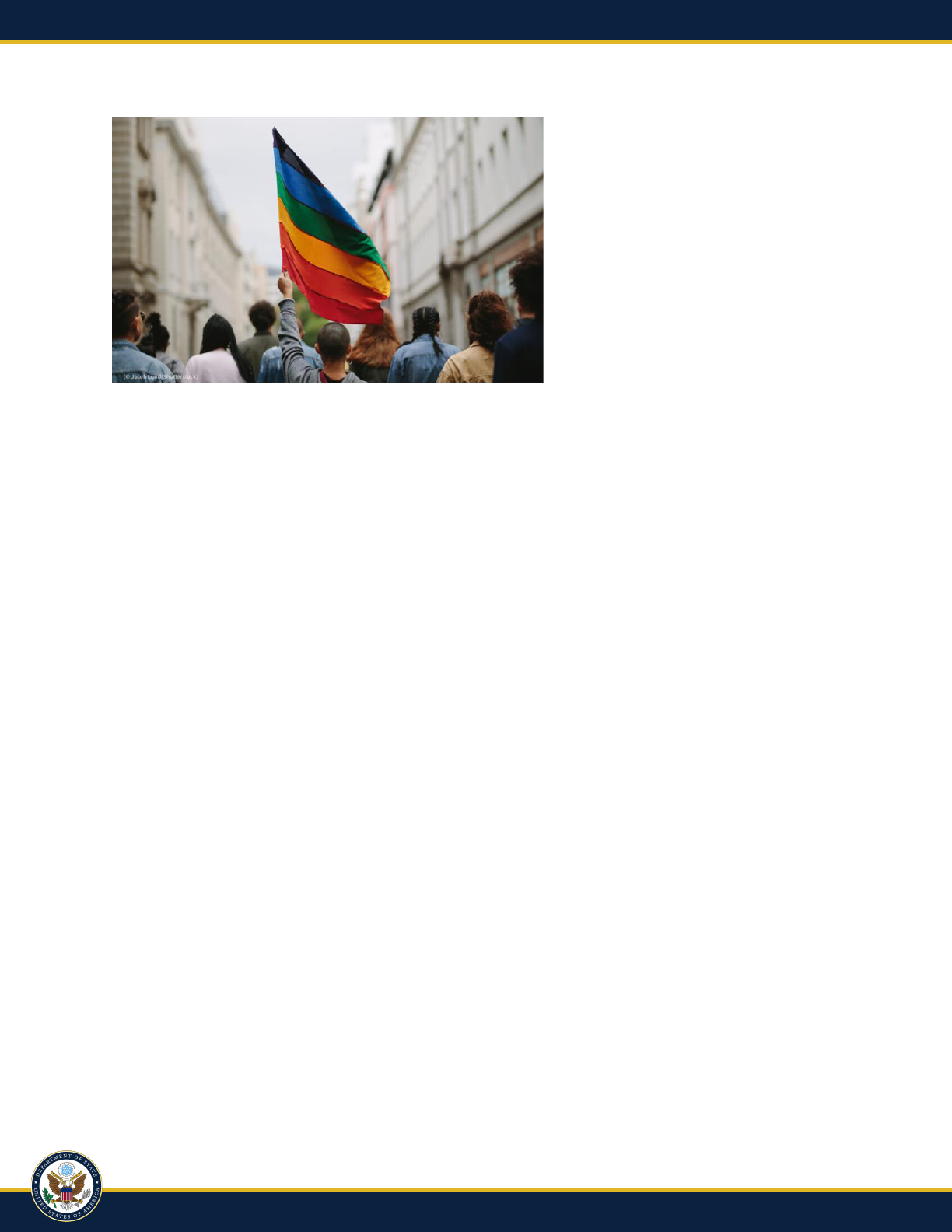
UNCLASSIFIED 14
2.4. What policies and practices can be
most effective in strengthening the
role of underserved and
underrepresented groups—at the
intersections of race, ethnicity,
religion, sex, gender, ability, and age—
in the formulation and implementation
of foreign assistance programs?
Finally, in line with its current policy
on program design, monitoring, and
evaluation in the Department of
State’s Foreign Affairs Manual, the
Department plans to assess how foreign assistance bureaus collaborate with and aid
underrepresented and underserved groups when designing and implementing programs. As part of
ongoing and planned work, bureau research teams will conduct participatory research projects with
and on behalf of underserved and underrepresented groups. These teams will collect quantitative
and qualitative data to operationalize foreign assistance terms, frameworks, programs, and policies,
and will design relevant performance measures. From these research projects, the Department will
document how diversity, equity, and inclusion (DEI) projects were implemented and develop
toolkits to demonstrate how others across the Department can implement similar activities.
Data, Tools, and Methods: To understand the conditions under which the Department operates,
bureaus will utilize recent literature and aggregate macro-level indicators to document global,
regional, and country-level trends on various areas of democracy (e.g., elections), rights (e.g.,
freedom of association), and governance (e.g., government capacity); security capacity,
accountability, and professionalism (historic and current); and economic assistance. The evaluation
framework will draw from a combination of third-party and U.S. government data and a survey of
25 pilot posts. To further understand mechanisms of success, evaluations will use methods such as
process tracing to test hypotheses and alternatives of digital technologies and Internet freedom
programming, as well as grounded theory to understand and theorize processes around effective
civil mobilization efforts related to freedom of association and labor rights, and in countries with
closing democratic space.
Bureaus will continue to collect program data to understand the efficiency, effectiveness, and
relevance of interventions in various environments (e.g., varying regime types). The Department will
review multiple sources, such as the USAID Development Experience Clearinghouse, State and
USAID’s Public and Private Partnerships Reporting Registry, Performance Plan and Report registry
and dashboard, and the State Department’s Evaluation Registry. This will include a review of the
systems and evaluations of bureaus with strong track records of managing assistance. To research
foreign assistance’s impact on underrepresented and underserved populations, the Department will
also review data and research from non-U.S. government entities, including academic and research
partners.

UNCLASSIFIED 15
Challenges and Mitigation Strategies: To mitigate the challenges posed by limitations in
resources and skillsets, a third-party evaluator and/or collaboration with USAID may promote
learning and a more meaningful use of evaluation findings and recommendations. It may also be
possible to rely on State and USAID bureaus and missions to analyze evaluations. The larger
challenge involves synthesizing a range of evaluations and data that are conducted at the
mechanism-level and project-specific into higher-level findings (whether for a country or multiple
countries). To mitigate this challenge, the new learning activities may require new types of staffing
and talent management, as well as partnerships with think tanks and academic institutions. Currently,
the Department collects disaggregated performance data to understand how underserved and
underrepresented groups benefit from programming; however, disaggregates on racial identity would
need to be developed to examine the Department’s progress on Executive Order 13895 (Advancing
Racial Equity).
Dissemination strategies will be designed upfront during the evidence-building process to ensure
that findings from the learning activities reach programmatic leads, decisionmakers, and Department
leadership. Through close and continued coordination and assessment, evaluators can align
complementary areas of learning and bring together new learning activities conducted as part of the
Evidence Act activities with other existing learning activities.
With the continuing COVID-19 pandemic, travel for data collection purposes may continue to pose
a problem; however, the Department will work with its implementing partners to continue to
develop innovative data collection practices that keep participants safe and also look to sources that
are based internationally to gather information on local conditions.
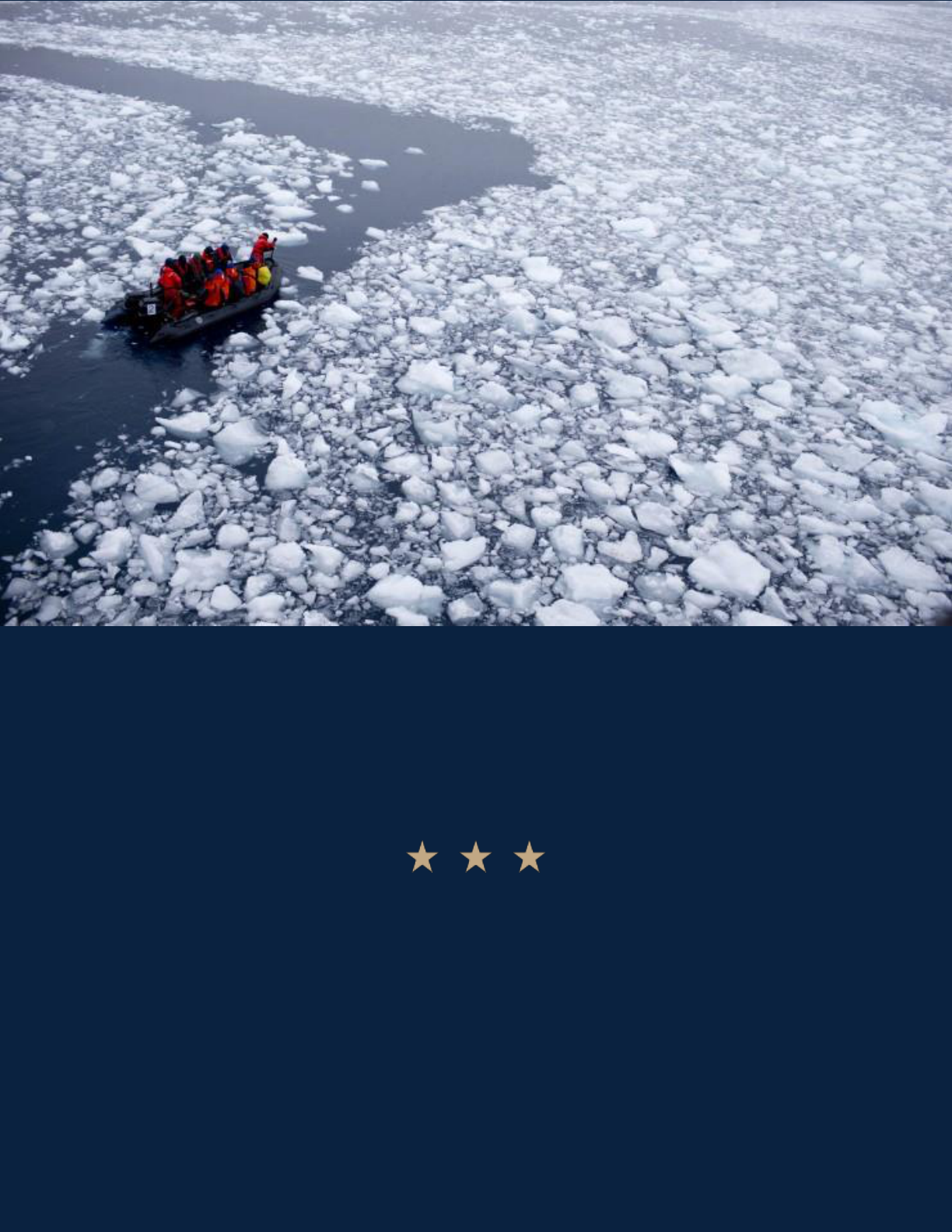
UNCLASSIFIED 16
Question Three:
How can the Department’s tools best address the
climate crisis?
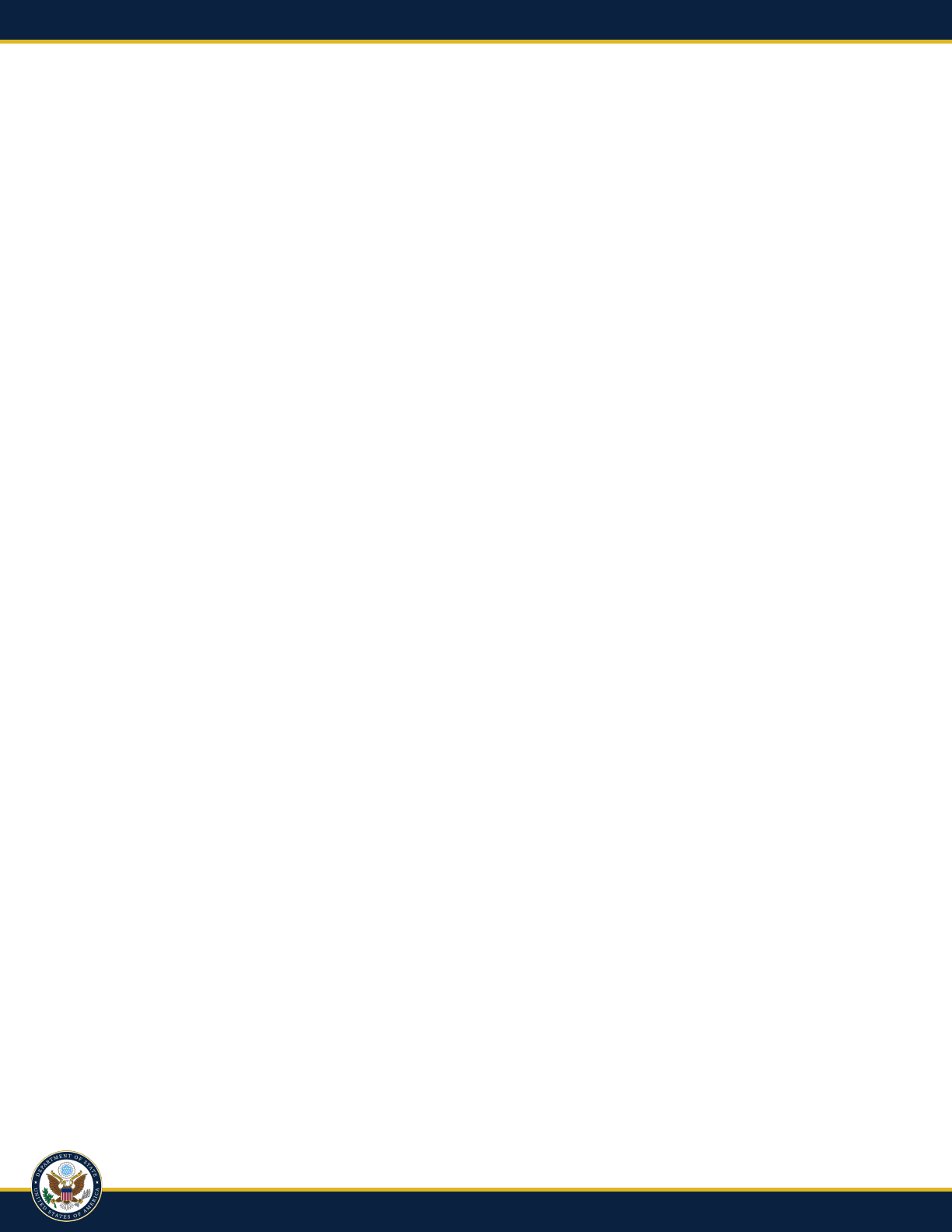
UNCLASSIFIED 17
3. How can the Department’s tools best address the climate crisis?
As the largest historical emitter of carbon emissions and fossil fuels, and the world's largest
economy, the United States must play a leading role in reducing global emissions and driving the
transition to clean energy. Bilateral and multilateral diplomacy, foreign assistance, and public
diplomacy are the Department's main tools to address the climate crisis. The Department plans to
address the following questions about these tools:
• 3.1. What cost-effective measures to reduce carbon emissions from the Department’s
operations can serve as models for other governments and demonstrate U.S. commitment to
reducing emissions?
• 3.2. How is the Department adapting to current and projected climate hazards?
• 3.3. Which diplomatic and programmatic interventions have the greatest effect on
decisions/commitments by government and private sector actors to reduce emissions?
• 3.4. How can the Department and interagency prioritize and effectively respond to the
climate adaptation and resilience needs of vulnerable countries and marginalized
populations?
Evidence Gathering Activities: The Department is planning the following activities to answer
these sub-questions.
3.1. What cost-effective measures to reduce carbon emissions from the Department’s operations can
serve as models for other governments and demonstrate U.S. commitment to reducing emissions?
To evaluate cost-effective ways of reducing greenhouse gas emissions (GHGe) from the operations
of Department facilities, the Department will first develop a global baseline estimate and then track
GHG reduction activities. The Department’s monitoring tools, such as our EnergyCAP (utility data)
and MeterNet (the Department’s smart metering program) will be used to evaluate impact.
Implications from possible changes to fleet, shipping, and travel will be studied. These analytics will
help the Department prioritize its efforts to further reduce emissions from its operations.
3.2. How is the Department adapting to current and projected climate hazards? To assess progress
on adapting to current and projected climate hazards, the Department will identify posts most
susceptible to natural hazards and implement surveys to begin to assess overall preparedness. The
Department will integrate key performance goals into the Climate Adaptation and Resilience Plan.
3.3. Which diplomatic and programmatic interventions have the greatest effect on
decisions/commitments by government and private sector actors to reduce emissions? and 3.4. How
can the Department and interagency prioritize and effectively respond to the climate adaptation and
resilience needs of vulnerable countries and marginalized populations? To assess the effectiveness of
our mitigation-focused diplomacy, the Department will use the Agency Priority Goals (APG) and
programmatic reviews. On both mitigation and adaptation analysis, State will also rely on post
reporting, internal trackers of host government climate commitments, and external data sources
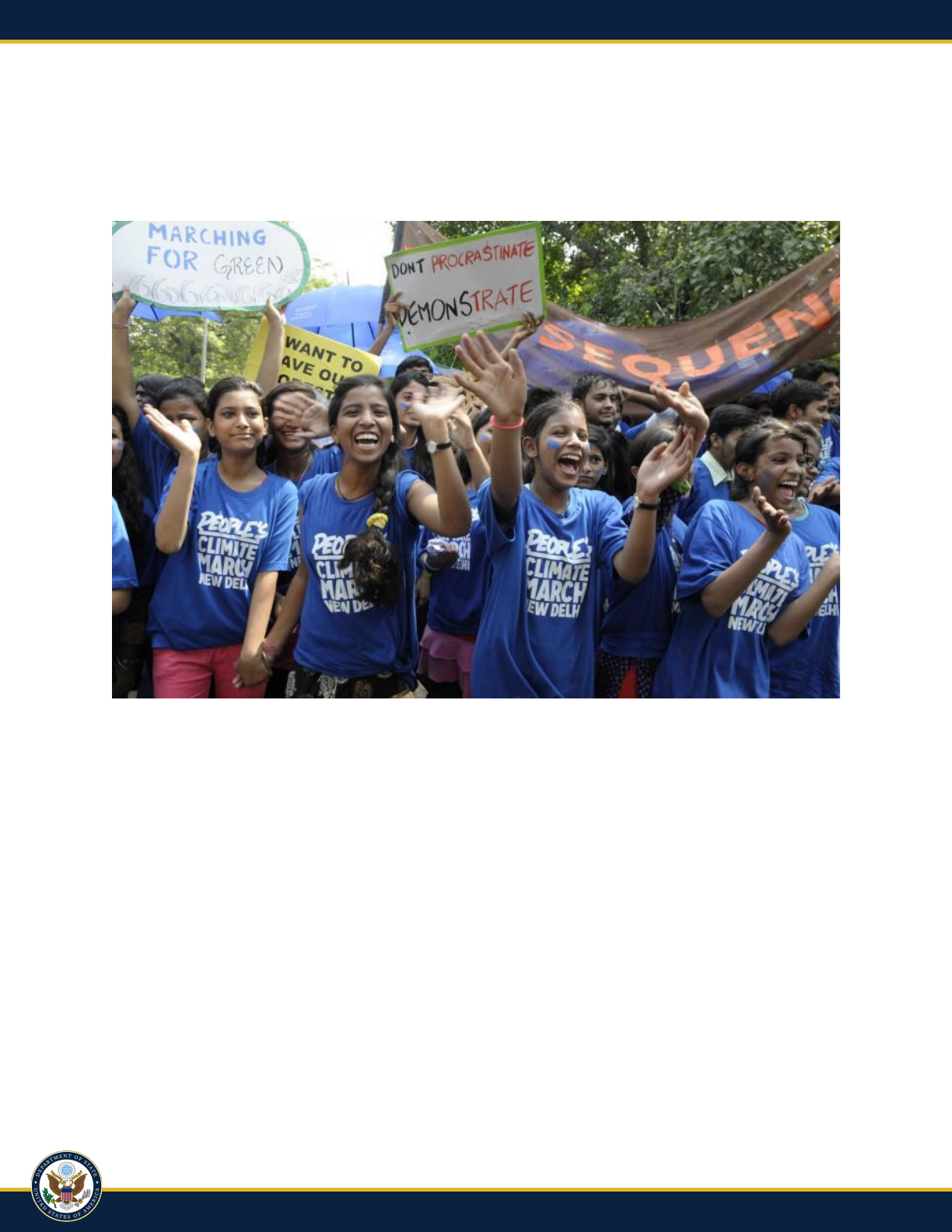
UNCLASSIFIED 18
(e.g., Climate Action Tracker, National Adaptation Plan Global Network (NAPGN), Race to
Resilience, Race to Zero, etc.). Our ability to respond to the adaptation needs of vulnerable
countries will be assessed through the annual data quality assessment (DQA), progress on APG
goals, and supporting indicators.
Data, Tools, and Methods: On Department mitigation and adaptation efforts, State will collect
data on the Department’s GHGe and internal adaptation activities.
On climate diplomacy, State will track its diplomatic and programmatic interventions and the climate
mitigation commitments and implementation actions of key actors (national and subnational
governments, private companies, etc.) connected to our interventions. On adaptation diplomacy,
State will track the adaptation and resilience needs of countries and the effectiveness and impact of
our adaptation programs. On public diplomacy, State will collect and learn from monitoring existing
data tracking the effectiveness of public engagement initiatives around efforts to mitigate the climate
crisis.
Challenges and Mitigation Strategies: First, the number of overseas locations from which the
Department will need to collect data for our GHGe and mitigation and adaptation activities are
numerous (270+). State plans to leverage site specific data to evaluate effectiveness and activities on
a case-by-case basis. Second, there is currently insufficient capacity in the Department to collect and
analyze this data and inform next steps. The Department is conducting an analysis of sustainability
and climate expertise and capacity across its workforce.
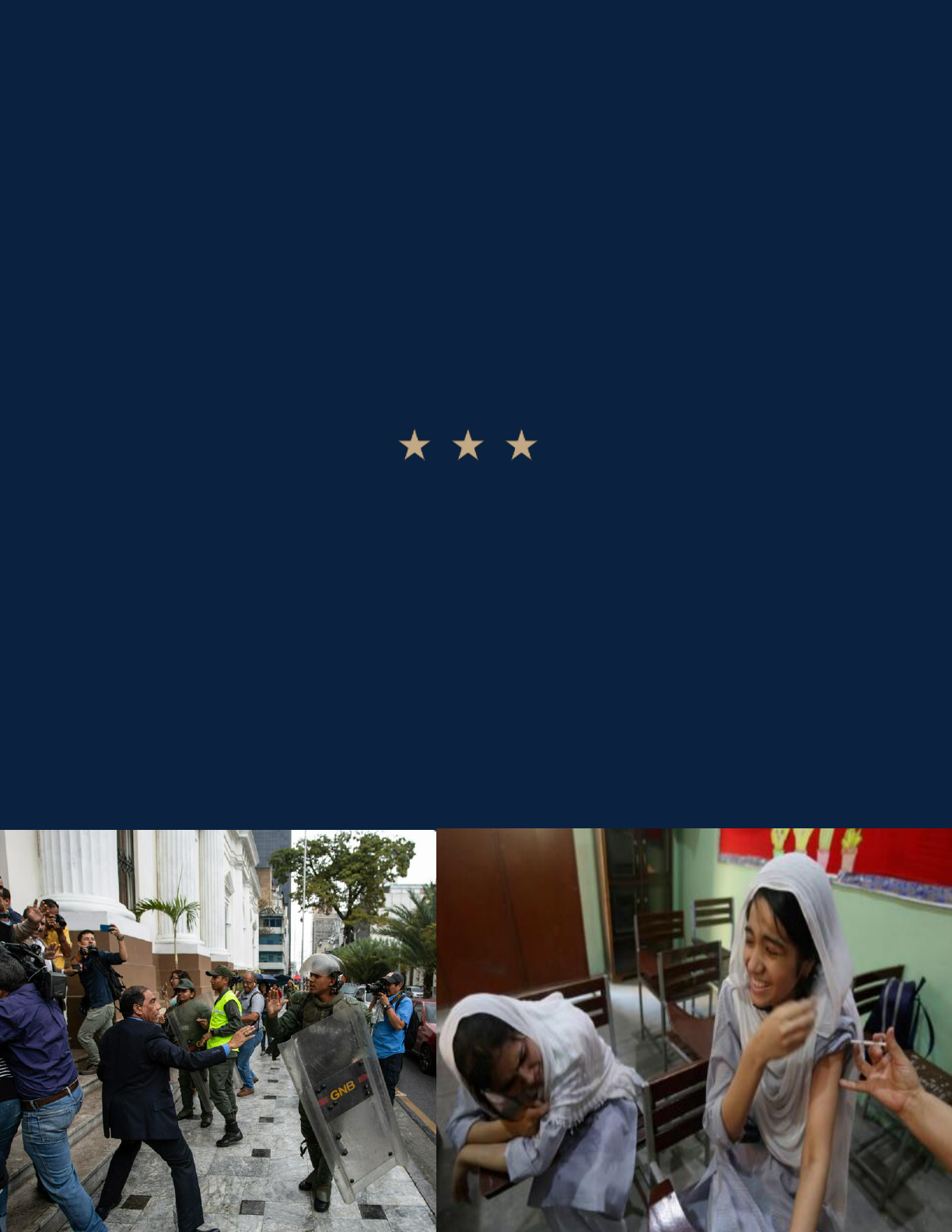
UNCLASSIFIED 19
Question Four:
How can the Department better respond to
unpredictable international events and emergencies
such as global pandemics?
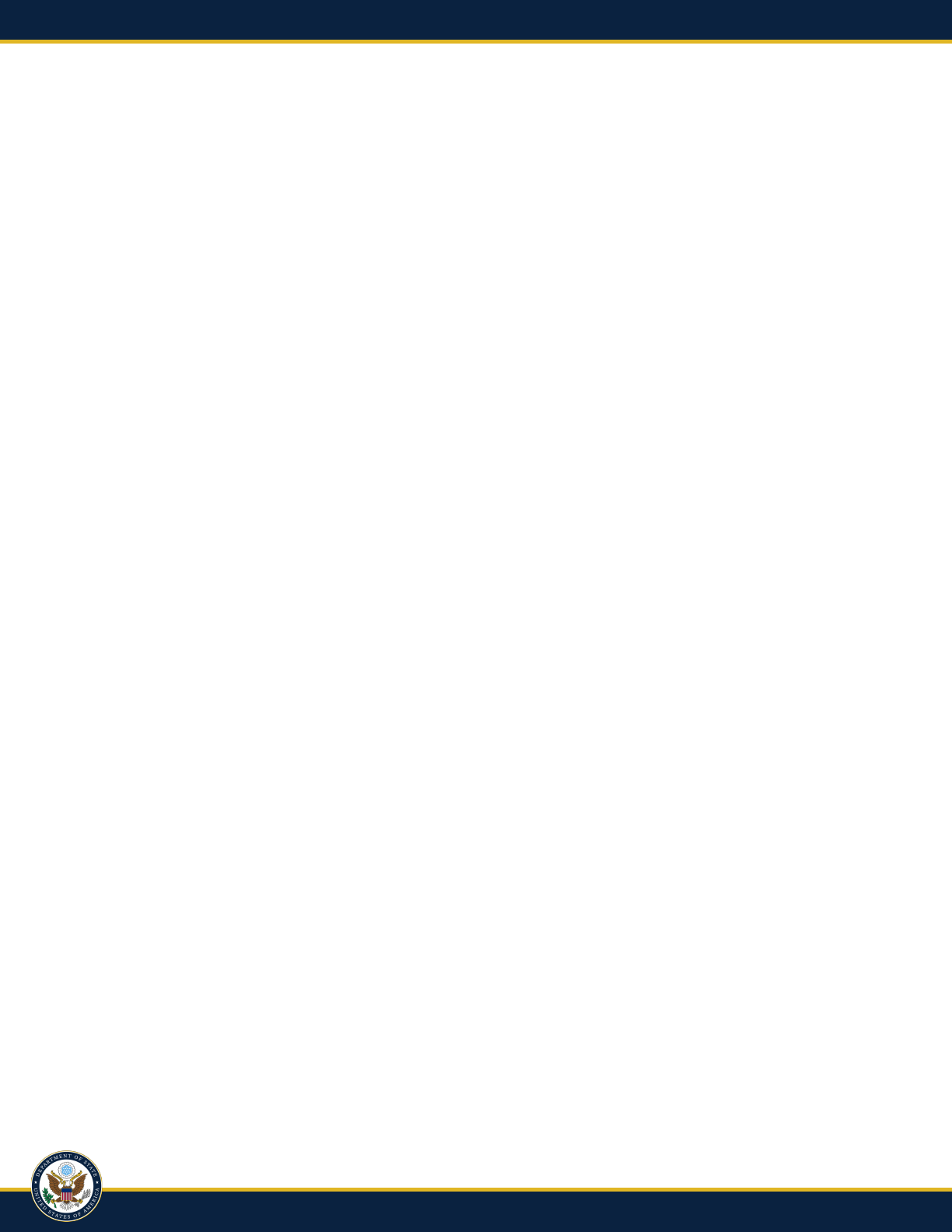
UNCLASSIFIED 20
4. How can the Department better respond to unpredictable
international events and emergencies such as global pandemics?
Unpredictable international events and emergencies can take many forms. At any given time, the
Department is responding to different types of crises around the world. For the Learning Agenda,
the Department will look specifically at crises falling into three critical categories: health crises,
complex crises, and novel crises (for example, crises resulting from the use of new and emerging
technologies). The following sub-questions explore how the Department can best prepare for and
respond to these crises.
• 4.1. What are the trend-tracking and forecasting tools, extant research studies, and
government, public health, and private industry coordination frameworks the United States
needs to address future global or large-scale regional health crises and infectious disease
pandemics?
• 4.2. How can the United States better coordinate and lead global efforts to anticipate and
mitigate the impact of complex crises in a timely manner, including by ensuring development
and humanitarian coherence and accountability to recipients of aid?
• 4.3. What capabilities does the State Department need to be prepared to respond to a crisis
resulting from the novel use of new and emerging technologies by a state and/or non-state
actor?
Evidence Gathering Activities: The Department will undertake targeted learning activities that
produce evidence for broad utilization and build on the existing evidence base. These activities
address information needs related to health crises or pandemics, complex crises, and abuse of
technology, but may also be relevant beyond these specific areas.
4.1. What are the trend-tracking and forecasting tools, extant research studies, and government,
public health, and private industry coordination frameworks the United States needs to address
future global or large-scale regional health crises and infectious disease pandemics? For global or
regional health crises or pandemics, State will survey the Department’s knowledge and tools
available for bio surveillance and pandemic preparedness and develop a corresponding workshop to
address deficiencies. Finally, State will assess how its work can coordinate with global initiatives, in
line with efforts at the G7, G20, and World Health Organization. State will collaborate with key
partners to undertake a series of activities, including laboratory and tabletop exercises, in support of
microbial forensics and to further develop international capabilities to investigate and attribute
deliberate biological events.
4.2. How can the United States better coordinate and lead global efforts to anticipate and mitigate
the impact of complex crises in a timely manner, including by ensuring development and
humanitarian coherence and accountability to recipients of aid? To address the challenge of
anticipating and preventing complex crises, State will conduct a study of its early warning, risk
prediction, and forecast analytics products, using a survey among internal State Department officials
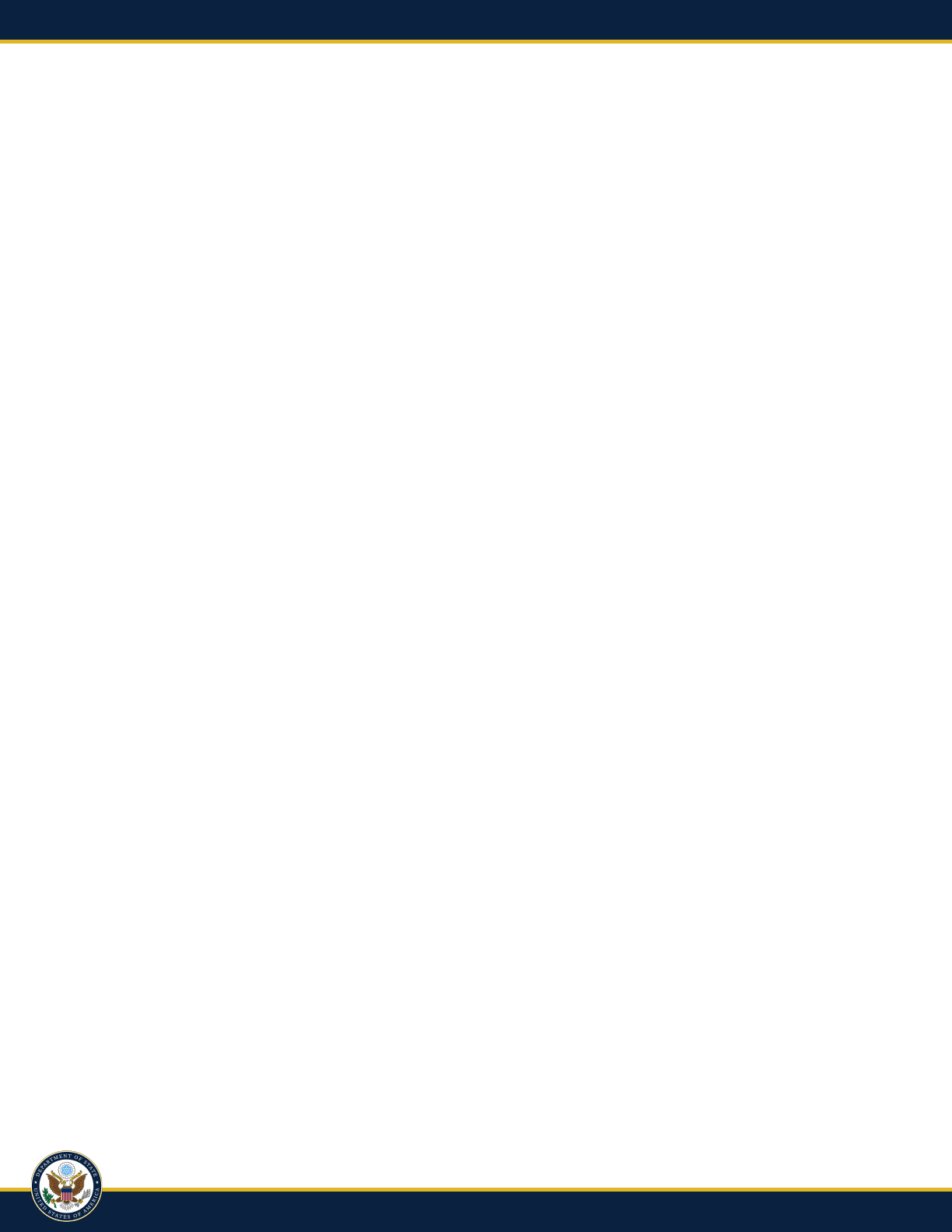
UNCLASSIFIED 21
to measure its utility and efficacy. Based on the survey results, the Department will review how it can
improve these early warning and risk-list products and compile lessons learned in a formal report to
the Secretary. The Department intends to undertake a pilot project to examine how relief and
development coherence can be better ensured in the planning and implementation of the response
to the Venezuela displacement crisis and how learning from that pilot can apply to other situations.
Finally, the Department will examine how lessons of previously commissioned research can be
applied to improvements in the Department’s humanitarian programming and oversight of
implementing partners.
4.3. What capabilities does the State Department need to be prepared to respond to a crisis resulting
from the novel use of new and emerging technologies by a state and/or non-state actor? To the
extent that new and emerging technologies may create novel crises, in addition to the expertise
resident in the Office of the Science and Technology Adviser to the Secretary, the Department has
created a new Bureau of Cyberspace and Digital Policy and a Special Envoy for Emerging
Technology that have increased the Department's technical capacity to advise on these issues and
implement new programming. These new entities can assist efforts to identify learning activities to
inform better preparation for crises resulting from the use of technology, such as large-scale cyber-
enabled sabotage or the use of new technologies.
Data, Tools, and Methods: The learning activities will collect, analyze, and utilize existing data
relevant for health crises, complex crises, and crises resulting from the abuse of technology. Data for
the health component covers a range of information, including:
• Data on infectious disease burden and trends, including from across the One Health
(human-animal-environment) nexus.
• Data on manufacture, procurement, and deployment of medical countermeasures and supply
chain capabilities.
• Information on the capacity of U.S. and other countries’ health systems, and capacity of
partner organizations to better prepare for and recover from health crises.
• Information on existing communication and cooperation frameworks at the global, regional,
and local levels, and between the health sectors and other critical sectors.
• Data on public perception of health information and existence of any mis- and
disinformation.
To help predict and prevent complex crises, the Department will use data captured in risk and early
warning reports, including its Atrocity Early Warning Report, Electoral Violence Risk Dashboard,
and Democracy, Governance, and Conflict Dashboard, as well as information on use of these
products. To respond to complex crises, the Department will focus attention on data available to the
U.S. government on what recipients of humanitarian aid need or want and how it is utilized; options
for more sustainable programming, particularly through local actors and existing mechanisms; what
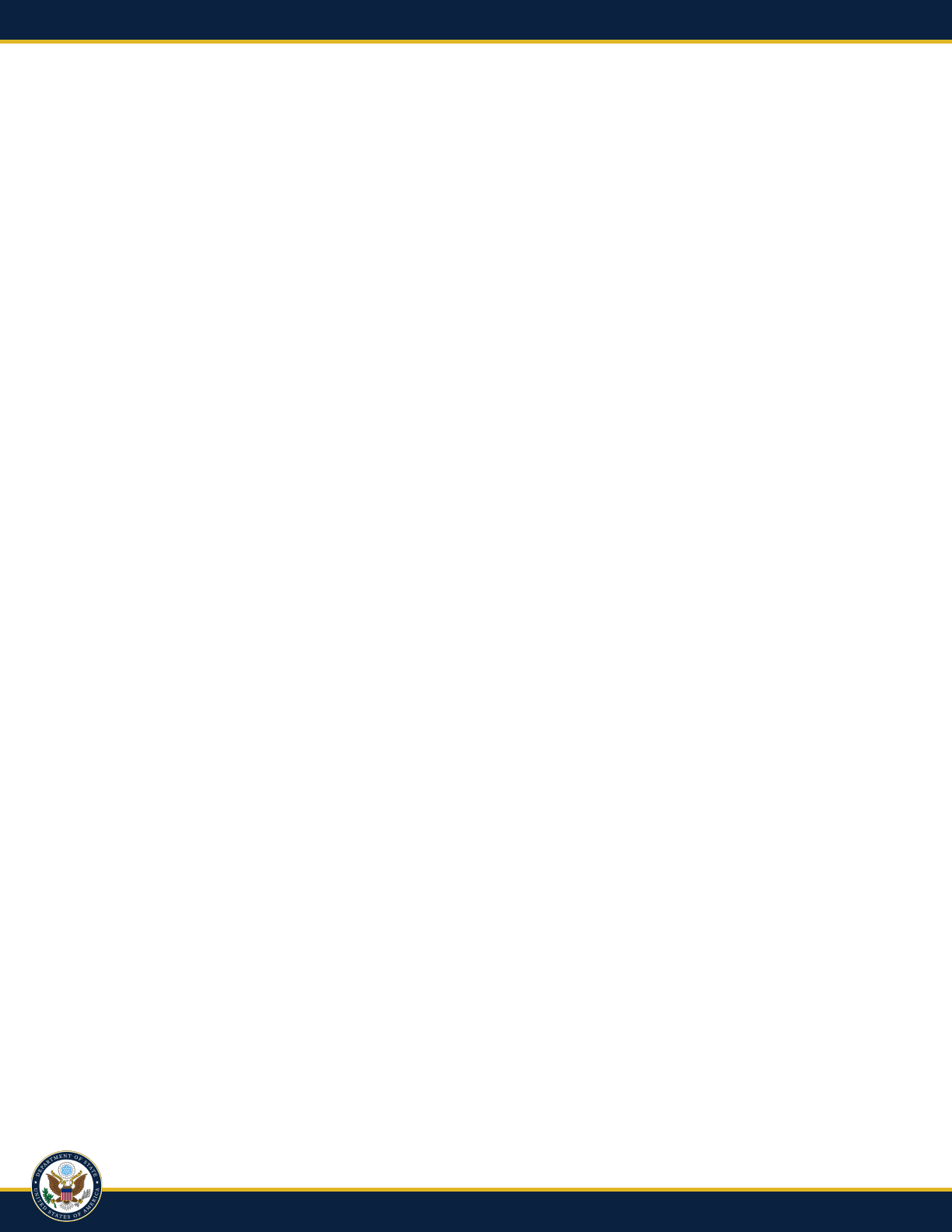
UNCLASSIFIED 22
efforts to increase support for local actors have had to date; and how and when development actors
should be engaged in an emergency response.
For crises resulting from abuse of technology, data collection will be determined once learning
activities are identified.
Challenges and Mitigation Strategies: Across all Question 4 learning activities, the Department
will prioritize its emerging expertise and capacity towards these questions. New and expanding
programs will devote funding towards activities addressing crises resulting from the novel use of
new and emerging technologies. In addition to funding, lead programmatic bureaus and offices will
similarly need to integrate these questions into their program design, monitoring, evaluation, and
learning frameworks.

UNCLASSIFIED 23
Question Five:
How should the Department confront the rise of global
disinformation and its negative effects on the security
and prosperity of the United States?
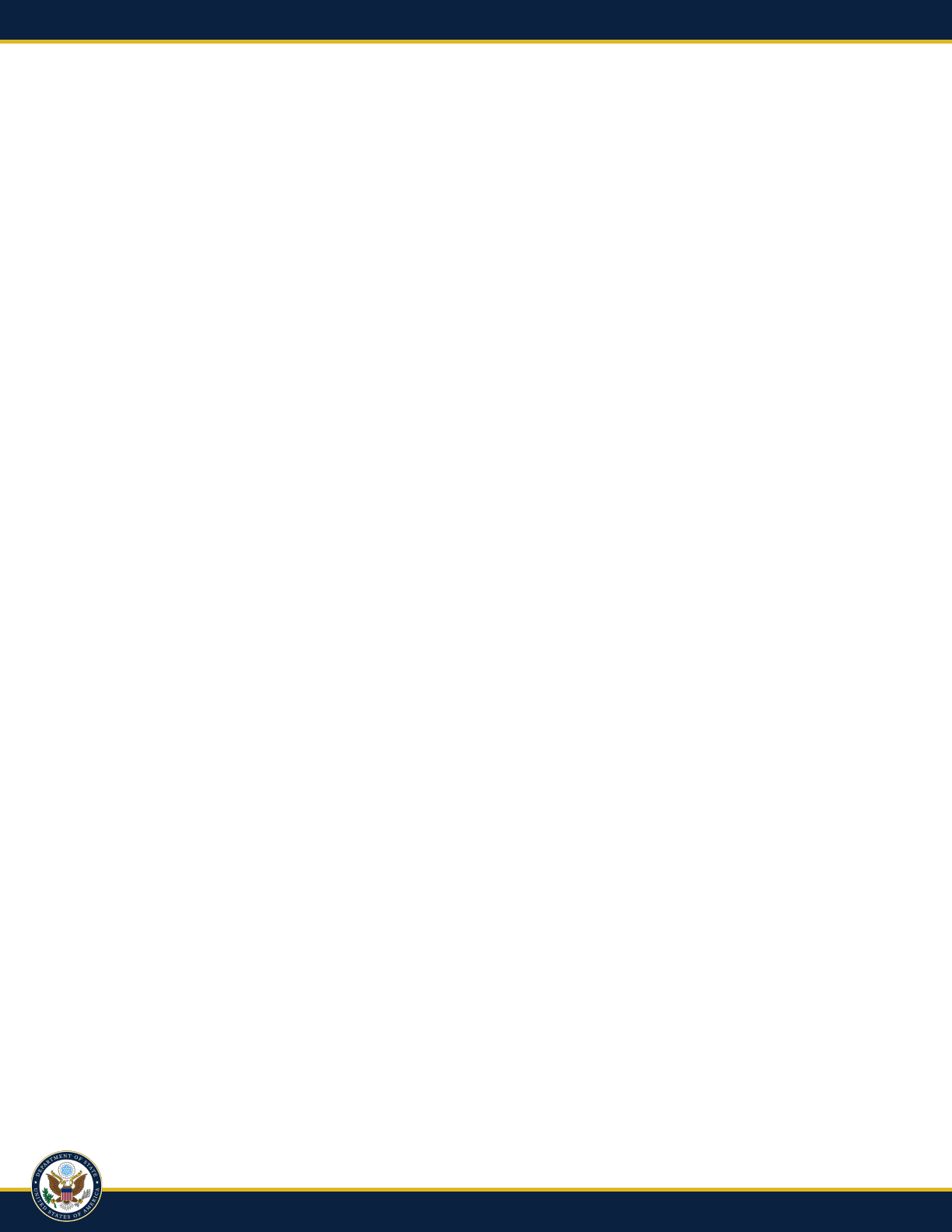
UNCLASSIFIED 24
5. How should the Department confront the rise of global
disinformation and its negative effects on the security and prosperity
of the United States?
The rise of global disinformation constitutes one of the most pressing challenges to the United
States and confronting it requires a coordinated approach in which diplomacy and diplomatic
instruments of statecraft feature prominently. The overarching question focuses on Department
efforts to confront the rise of global disinformation and its negative effects on U.S. security and
prosperity, including the effect on allies and partners. It also accounts for the need to optimize
interagency coordination and cooperation with allies, partners, and the private sector.
• 5.1. What measures can the Department take against state and non-state actors who spread
disinformation that harms the security and prosperity of the United States? Which of these
measures is likely to be most effective based on available evidence?
• 5.2. Beyond measures against actors who spread disinformation, what other measures can
the Department take to limit the spread of disinformation and to shape the broader
information environment in ways that mitigate disinformation’s negative effects on the
security and prosperity of the United States? Which of these measures is likely to be most
effective based on available evidence?
• 5.3. Based on the answers to sub-questions 1 and 2, what diplomatic and programmatic
responses should the Department implement, and what tools or skills does the Department
need to develop, strengthen, or share?
• 5.4. Based on the answers to sub-questions 1, 2, and 3, how do we optimize the
Department’s institutional frameworks for internal and external coordination to implement
these measures?
Evidence Gathering Activities: The Department is planning the following activities to answer
these sub-questions.
5.1 What measures can the Department take against state and non-state actors who spread
disinformation that harms the security and prosperity of the United States? Which of these measures
is likely to be most effective based on available evidence? and 5.2. Beyond measures against actors
who spread disinformation, what other measures can the Department take to limit the spread of
disinformation and to shape the broader information environment in ways that mitigate
disinformation’s negative effects on the security and prosperity of the United States? Which of these
measures is likely to be most effective based on available evidence? The Department will analyze
cases where it has (1) taken preventative, deterrent, or punitive actions against state and non-state
actors who spread disinformation and/or (2) engaged in activities to limit the spread of
disinformation or to shape the information environment. Bureaus will create a typology of measures
and outcomes and conduct a meta-assessment of these actions and activities to determine where it is
possible to assess their effectiveness and which measures were most effective based on the available
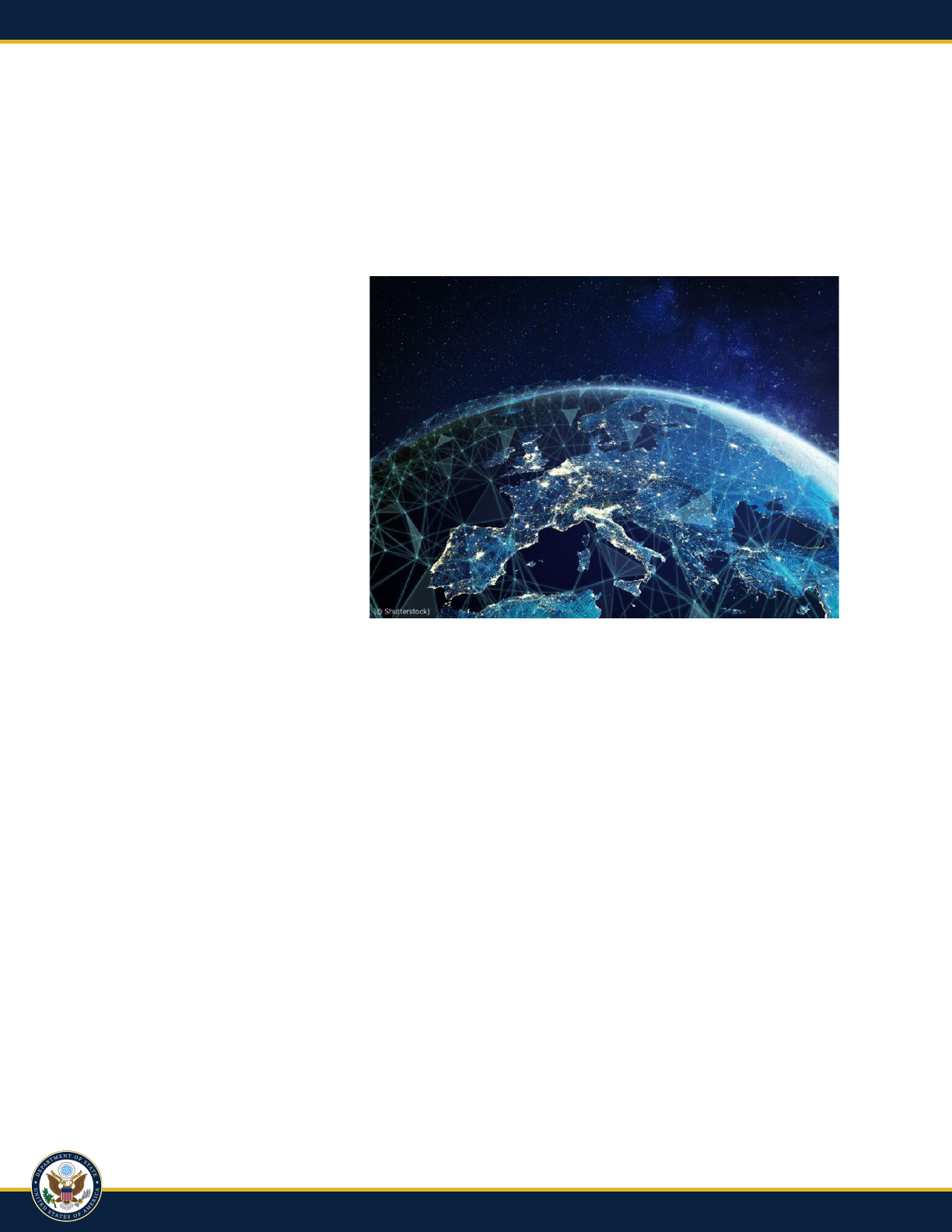
UNCLASSIFIED 25
evidence. The Department anticipates conducting a literature review and consulting with outside
experts, including allied governments engaged in combatting disinformation. Using the data from
the meta-assessment, the literature review, and expert roundtables, State will identify cases that
illustrate the different approaches the Department could take to effectively counter disinformation.
State will select a smaller number of cases for more detailed analysis, identifying trends related to
effectiveness while controlling to the degree possible for other variables.
5.3. Based on the answers to sub-
questions 1 and 2, what
diplomatic and programmatic
responses should the
Department implement, and
what tools or skills does the
Department need to develop,
strengthen, or share? The
Department will conduct a
portfolio review of current
diplomatic and programmatic
responses and utilize gap analysis
to assess where responses do not
align with or allow for effective
measures identified by addressing
sub-questions 1 and 2. Depending on the outcome of this effort, the appropriate bureaus will lead a
review of the programmatic and diplomatic changes necessary to improve outcomes. The
Department envisions an effort to explore any necessary curriculum changes or new trainings
required across the organization. This internal review will be aligned with an assessment of the
internal and external coordination frameworks currently in place.
5.4. Based on the answers to sub-questions 1, 2, and 3, how do we optimize the Department’s
institutional frameworks for internal and external coordination to implement these measures? The
Department will ensure it has the right frameworks for coordination, including by engaging other
federal departments and agencies as well as experts in organizational behavior and systems analysis.
Implementing adaptations in diplomatic and programmatic activities is likely to require a higher
tolerance for programmatic risk and increased willingness to delegate action authority to posts and
lower-level officers. This is less a challenge for data collection and analysis than a possible barrier to
acting on findings, but a key component of this effort will be to explore ways to overcome this
barrier through process reforms.
Data, Tools, and Methods: Data collection and data sources for Questions 5 include review of
current literature; data calls to bureaus, offices, and posts that implement disinformation programs
for program evaluations; review research conducted on the effectiveness of communications efforts
to counter disinformation; surveys of participants, practitioners, program officers, and managers to
identify activities that may not have been categorized as intended to counter disinformation; as well
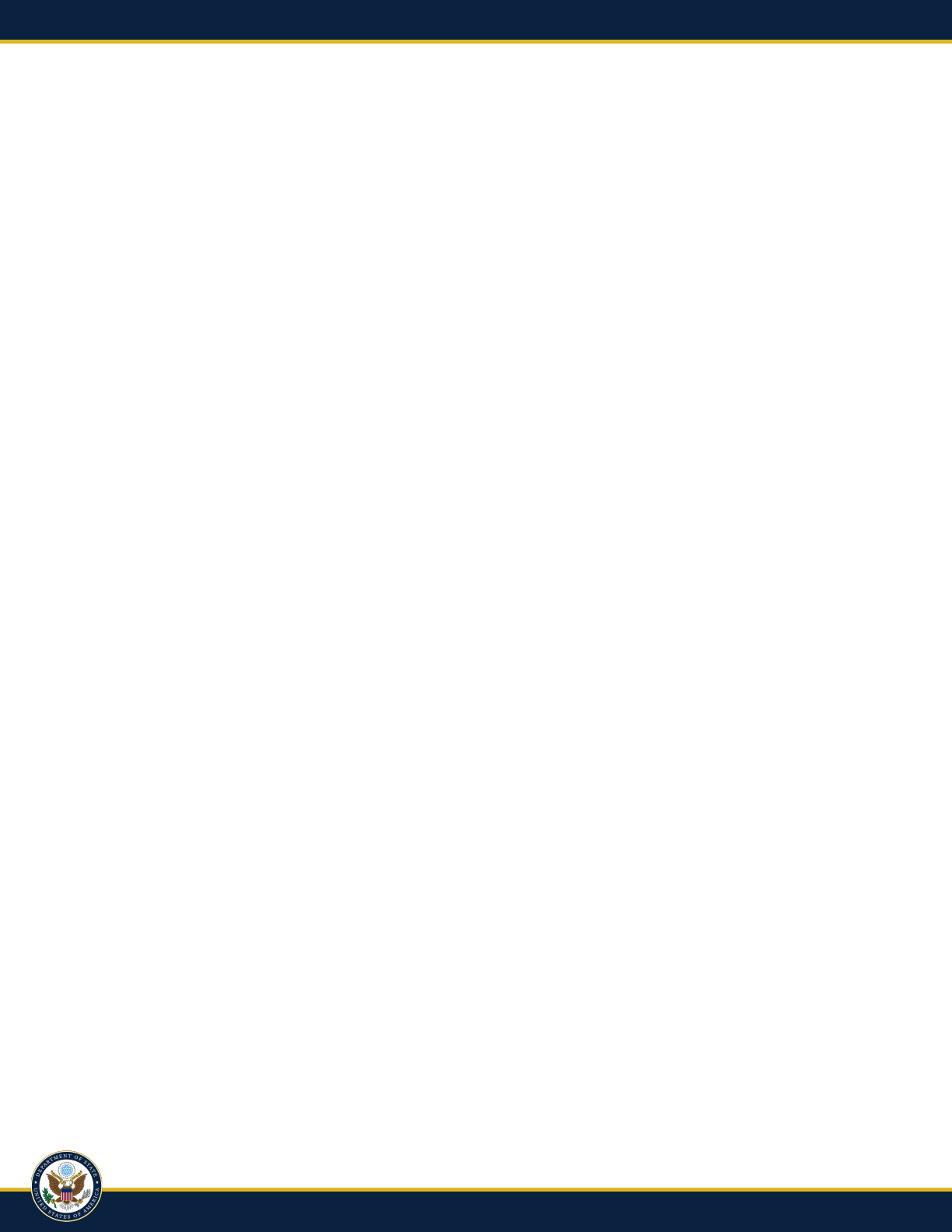
UNCLASSIFIED 26
as workshops with external partners to solicit external viewpoints and current research. Additionally,
team members will review the Evaluation Registry and the Evaluation Management System, which
houses reports and summaries of evaluations funded by diplomatic engagements and foreign
assistance.
Challenges and Mitigation Strategies: Synthesizing higher-level findings may be challenging
based on available data. The relevant bureaus and offices anticipate using a mixed methods approach
to mitigate this challenge, as well as triangulating data sources to overcome gaps or biases. Further
data calls and senior leader endorsement of candid feedback will help overcome reticence to critique
ongoing efforts. Senior leader engagement will be critical for enabling enthusiasm to participate in
evidence collection and analysis and utilizing the results to reshape policies and programs. With the
continuing COVID-19 pandemic, travel for data collection purposes may continue to pose a
problem. However, the Department will work with its implementing partners to continue to utilize
and develop innovative data collection practices that keep participants safe.

UNCLASSIFIED 27
Question Six:
How can the Department balance customer service
expectations with national security and cost-
effectiveness to provide a better customer service
experience to U.S. citizens, and to foreign nationals
seeking visas?

UNCLASSIFIED 28
6. How can the Department balance customer service expectations with
national security and cost-effectiveness to provide a better customer
service experience to U.S. citizens, and to foreign nationals seeking
visas?
U.S. citizens and foreign nationals have grown accustomed to internet-based services and goods
delivered on-demand, and they expect the same level of service from their government services.
Question 6 will identify ways to improve the delivery of timely, efficient, convenient, and
transparent consular services to U.S. citizens abroad by assessing current metrics, reviewing
customer satisfaction ratings, and identifying best practices for delivering effective and efficient
consular services. Learning agenda activities for this question support the new Executive Order
14058 on “Transforming Customer Experience and Improving Service Delivery” and the President’s
Management Agenda priority for excellent, equitable, and secure Federal services and customer
experience.
• 6.1. How do we measure whether we are responding to, and managing the expectations of,
U.S. citizens overseas and others seeking services in a secure, efficient, and timely manner?
• 6.2. To what extent are current interactions effective in keeping U.S. citizens who travel, live,
and work abroad informed about safety and security issues?
• 6.3. What capabilities could maximize human and time resources to protect U.S citizens
overseas and abroad while providing superior customer service? How do we equip our staff
to improve consular services, through greater efficiency, improved customer experience,
and/or reduced backlogs?
Evidence Gathering Activities: . The Department will
review its flagship website on travel.state.gov (TSG) to
improve navigation and ensure the website meets federal
Plain English standards. The Department will continue to
conduct the American Customer Service Index (ASCI)
survey to measure customer satisfaction. The pilot of
online passport renewal services, as committed in
Executive Order 104058, will be a test bed for launching
this service to the public. The Department will evaluate
the effectiveness of Global Support Services contracts
(GSS) in providing administrative support for consular
services.
Data, Tools, and Methods: The Department has set processing standards for routine passport
applications to measure service standards for consular products. The ACSI survey model includes
metrics to measure customers’ satisfaction, in order of importance (quality; staff proficiency; the
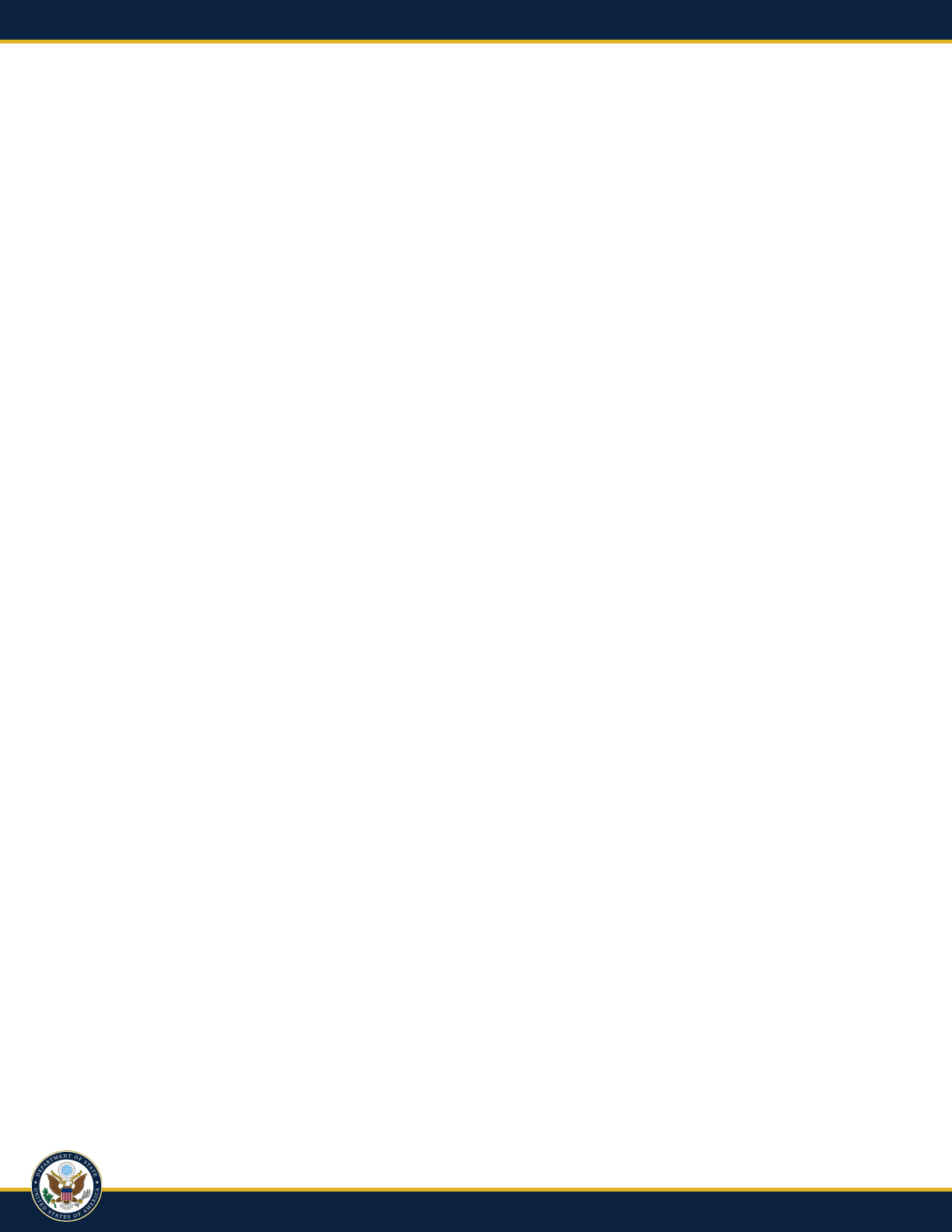
UNCLASSIFIED 29
application process; and information). The Department will conduct needs assessments to ensure its
IT capabilities meets the needs of consular professionals who provide all consular services.
Challenges and Mitigation Strategies: The Bureau of Consular Affairs anticipates no significant
challenges to addressing these questions.
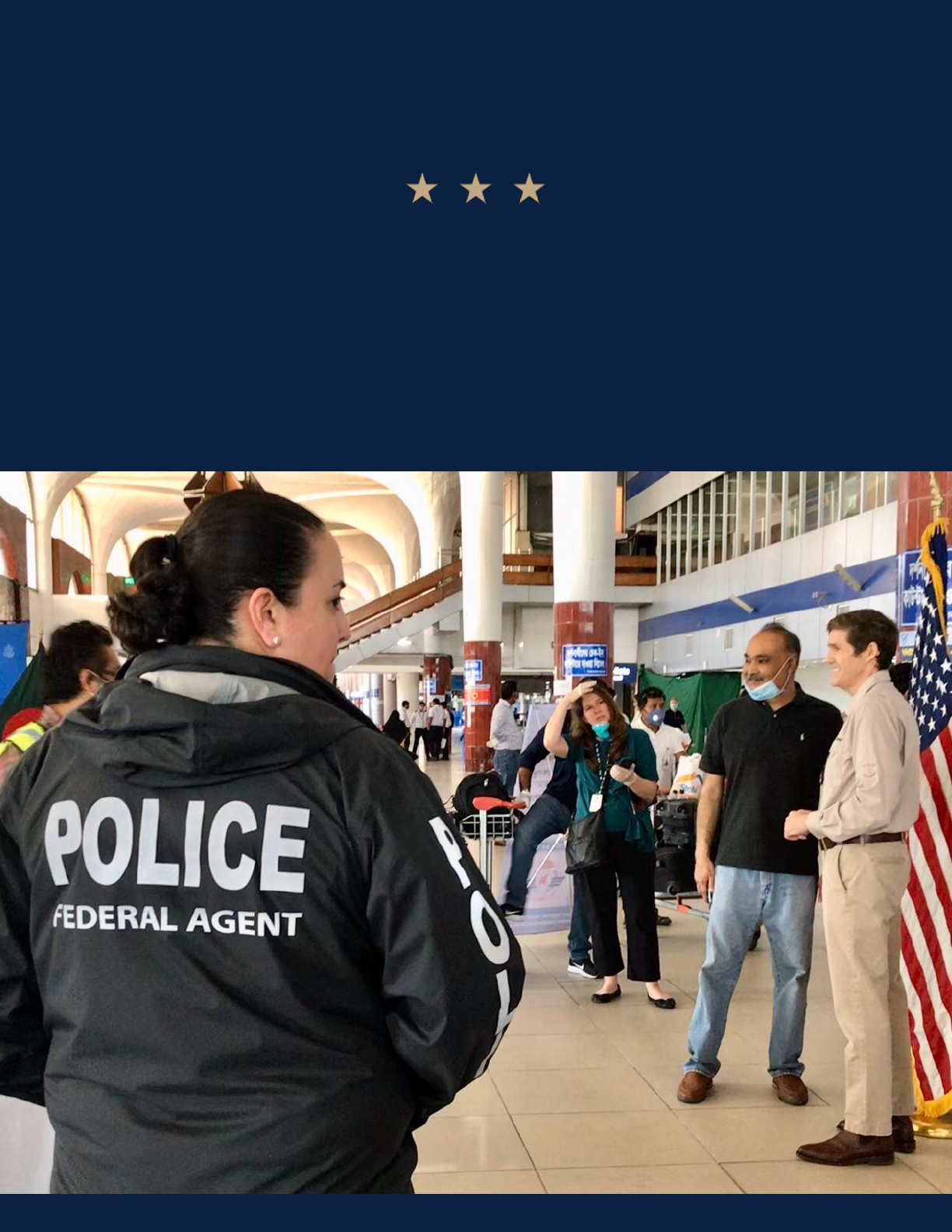
UNCLASSIFIED 30
Question Seven:
How can the Department more effectively analyze and
manage risks to promote a safe and secure working
environment for its staff and partners?
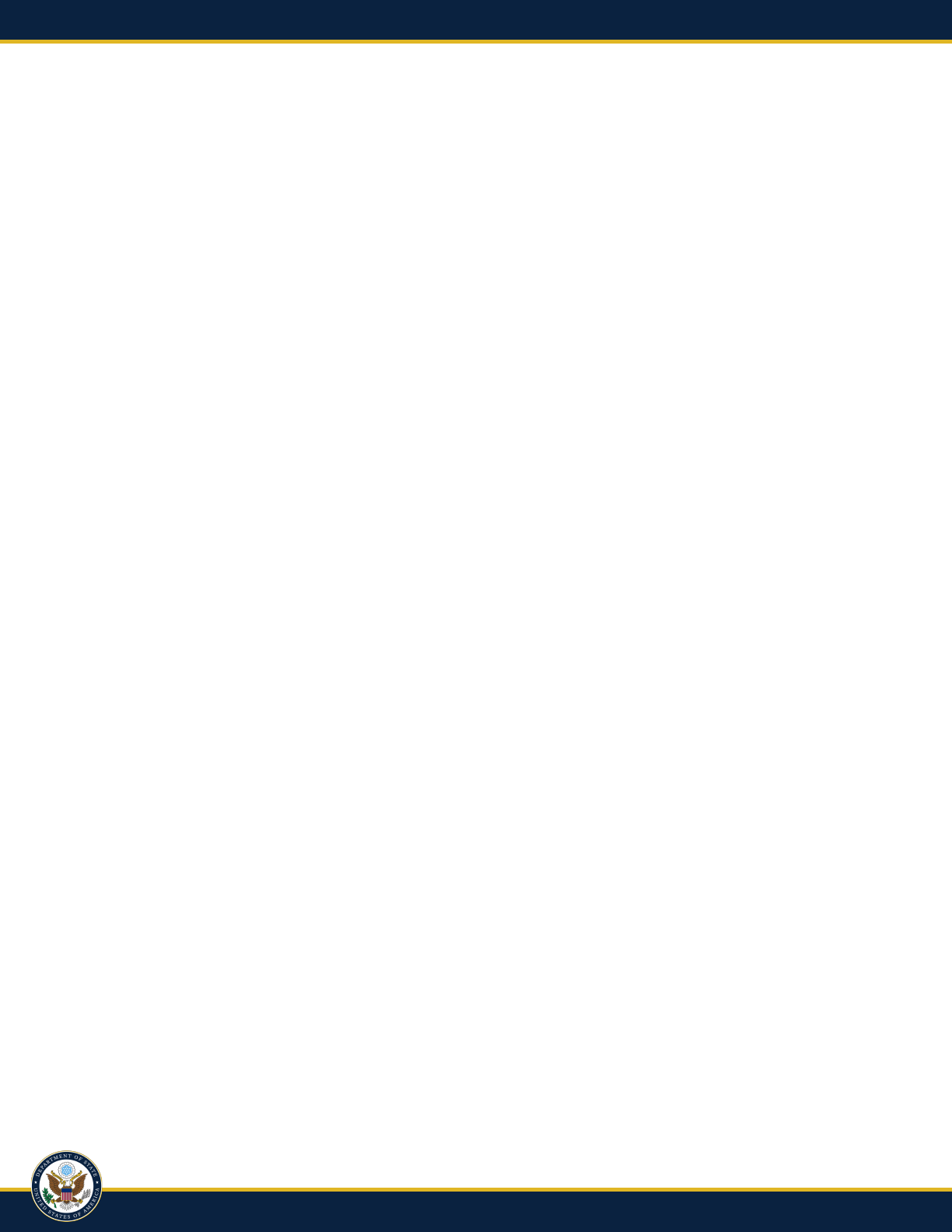
UNCLASSIFIED 31
7. How can the Department more effectively analyze and manage risks
to promote a safe and secure working environment for its staff and
partners?
The Department will examine how it can best adapt policy and procedures to manage the risks our
foreign affairs professionals face at home and abroad while reinvigorating the in-person diplomacy
that is essential to advancing U.S. interests around the world.
• 7.1. How does the Department adapt existing policies and programs to manage risks to
Department and interagency personnel, facilities, and information to support safe and secure
conduct of in-person diplomacy that includes the possibility of locations and workspaces
outside of U.S. embassies and consulates?
• 7.2. What senior level policy, guidance, and training are needed to foster a culture that
accepts considered, needed risks, and manages them appropriately?
• 7.3. What policies and practices does the Department need to adopt or enforce to ensure the
physical security, readiness, and mobility of our global workforce amid constantly changing
circumstances?
Sub-questions under Question 7 will assess how current policies, practices, and procedures can be
adapted to meet the Secretary’s call for changing the Department’s approach to risk management to
better meet the United States’ strategic need to counter great power competition abroad with more
direct, person to person engagement. While the Department has been closely reviewing its risk
management principles for some time, this renewed focus on risk management was highlighted in
the Secretary’s speech from October 27, 2021, at the Foreign Service Institute on the Modernization
of American Diplomacy and the recommendations of the Operational Security Panel (OSP). The
Department of State is the lead federal agency for adapting overseas security policies, practices and
procedures for all U.S. federal departments and agencies overseas, except those that report directly
to a Combatant Command under the direction of the Department of Defense.
Evidence Gathering Activities: The Department is planning the following activities to answer
these sub-questions.
7.1. How does the Department adapt existing policies and programs to manage risks to Department
and interagency personnel, facilities, and information to support safe and secure conduct of in-
person diplomacy that includes the possibility of locations and workspaces outside of U.S. embassies
and consulates? The Department will consider ways to adapt existing risk mitigation strategies to
allow for more in-person diplomacy overseas. These will include enhancing existing processes that
evaluate the risks, costs, and benefits associated with U.S. presence – and absence – in a given
location; and adapting Foreign Affairs Counter Threat (FACT) training to risks associated with
varied threat environments, and encouraging more participation in Overseas Security Advisory
Council (OSAC) Chapters, including from outside of capitols or consulate cities through small or
single officer posts engaging with U.S. private sector interests.
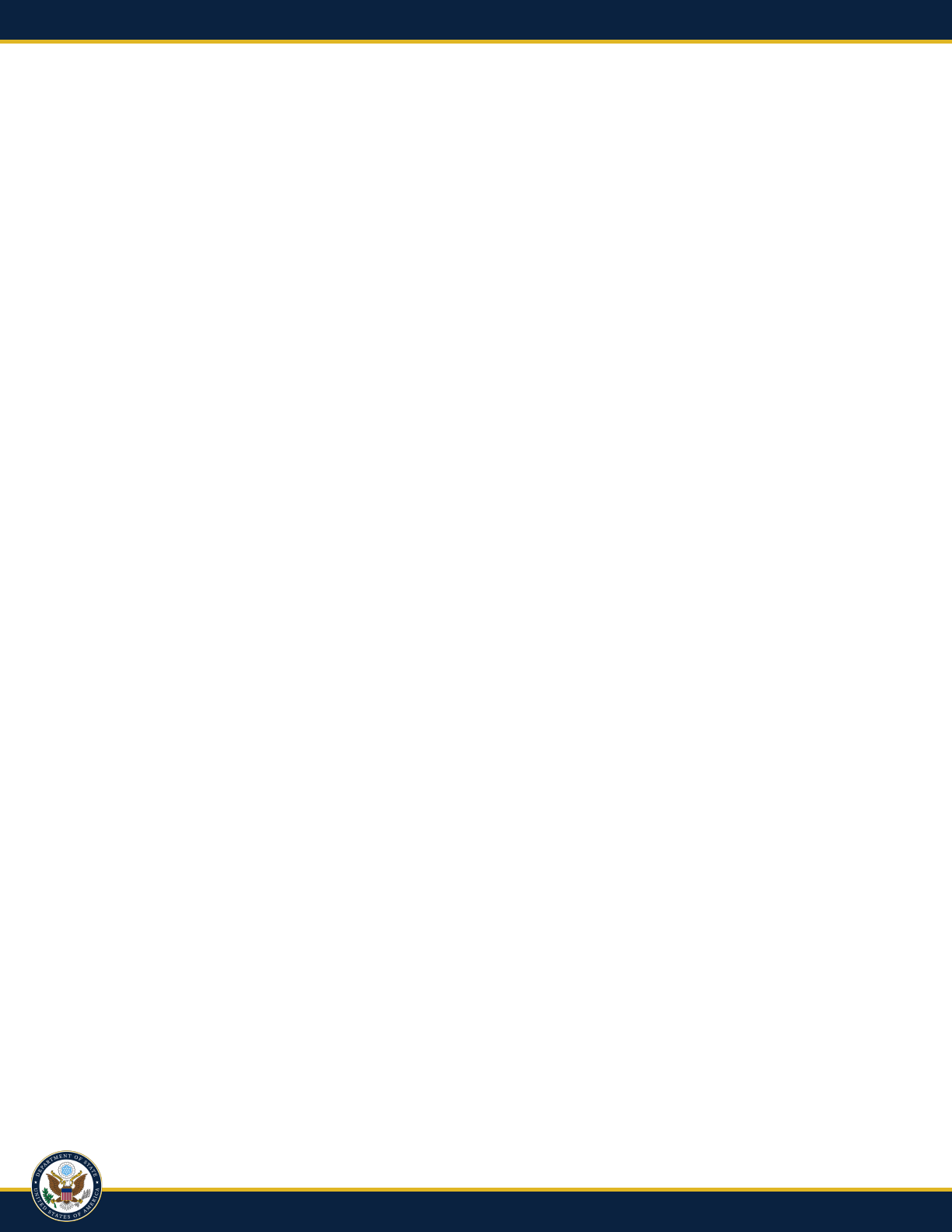
UNCLASSIFIED 32
7.2. What senior level policy, guidance, and training are needed to foster a culture that accepts
considered, needed risks, and manages them appropriately? State will examine what senior level
policy, guidance, and training are needed to foster a Department-wide culture that accepts
considered, needed risks and manages them appropriately.
7.3. What policies and practices does the Department need to adopt or enforce to ensure the
physical security, readiness, and mobility of our global workforce amid constantly changing
circumstances? The Department will examine what policies and practices it needs to adopt or
enforce to ensure the physical security, readiness, and mobility of our global workforce amid
constantly changing circumstances.
Data, Tools, and Methods: To gather data, bureaus will use recent literature, relevant national and
agency-level guidance, and strategies including relevant Joint Regional Strategies (JRS); functional
bureau strategies (FBS); integrated country strategies (ICS); the Department’s Evaluation
Management System (EMS), which serves as the system of record for all evaluations funded by
diplomatic engagement funds; and diplomatic cables. State will collect relevant information from
allies, interagency partners, and the private sector related to operating in low-threat, small footprint,
and expeditionary platforms. Similar studies related to facility and information security will be
conducted. This includes examining the collocation of U.S. personnel in allies’ facilities in
environments where the U.S. does not have appropriate physical structures; the use of commercially
leased facilities overseas for small missions in permissible environments; and the expansion of the
number of public diplomacy venues that are not collocated within hardened Embassy or Consulate
structures as appropriate. Bureaus and offices will conduct data calls and continue to collect
emergency action cables, after action reports, and Accountability Review Boards data to understand
the efficiency, effectiveness, and risk-benefit trade-offs of different solutions in different
environments. Bureaus and offices will also continue to identify additional data sources as
appropriate throughout the course of the learning activities.
Challenges and Mitigation Strategies: The Department’s business processes and organizational
culture can challenge our ability to do the kind of on-the-ground, person-to-person diplomacy that is
so essential. New embassies are built far from central areas and with intense security measures,
which can make it hard for our diplomats simply to schedule meetings off compound/outside of
our facilities. It can take years to open new missions—something we used to do much more quickly.
And moving our people into new places—even low-risk places—often comes with security
requirements that slow us down considerably. Meanwhile, other countries are increasing their
diplomatic presence worldwide with far greater ease. We can keep our people and their families safe,
while also standing up new locations overseas quickly to respond to changing events, and while
continuing to engage more outside embassy walls and extending our reach to cities, communities,
commercial centers beyond national capitals to advance U.S. interests and strategic priorities, and
counter competition and threats from nation-state competitors and non-state actors.
Addressing these constraints can be best met by adapting the Department’s leadership culture, risk
tolerance, and internal processes. As Secretary Blinken has said, “A world of zero risk is not a world
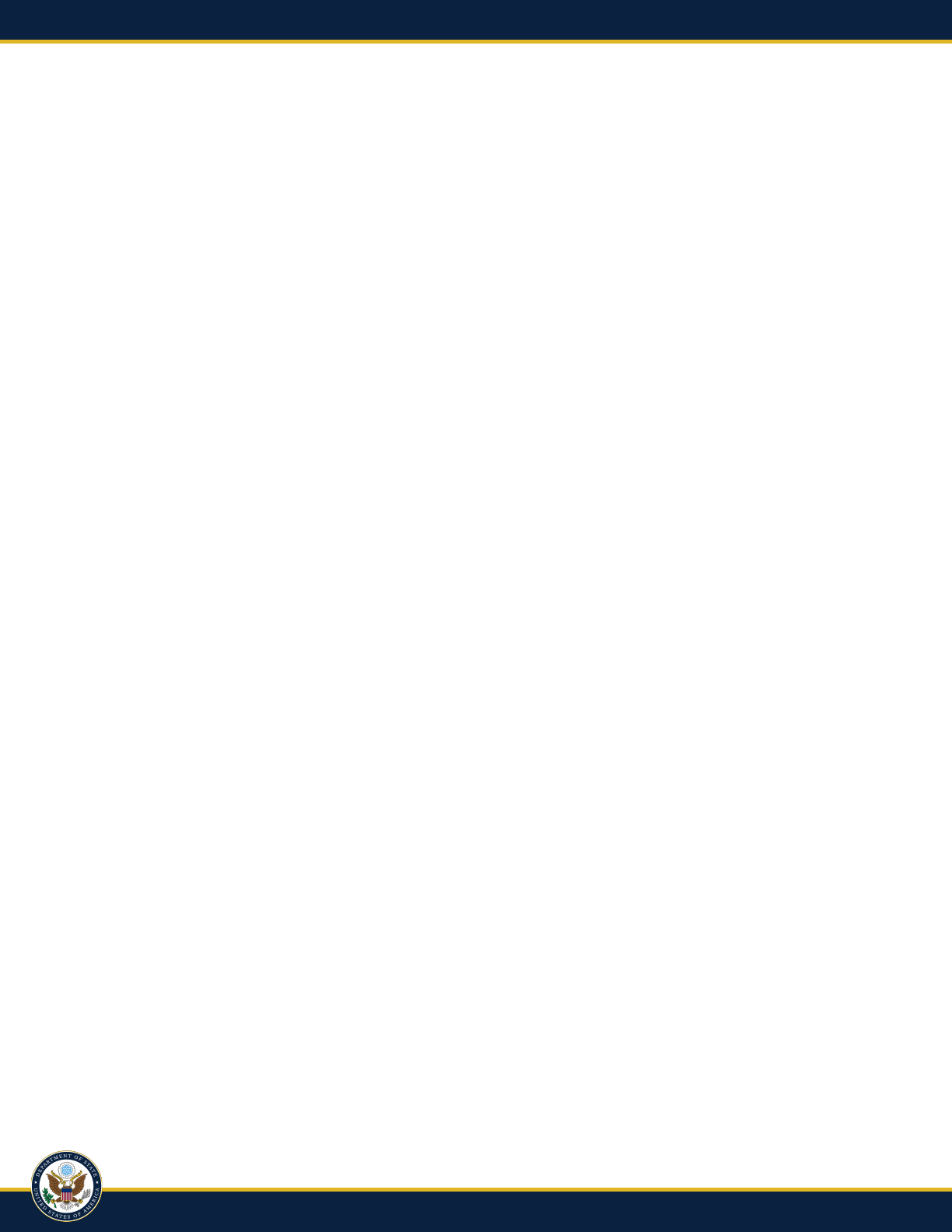
UNCLASSIFIED 33
in which American diplomacy can deliver. We have to accept risk, and manage it smartly. And in
this, as in other areas, we will work closely with Congress to ensure that we have the authorities and
policies in place to support our people.”
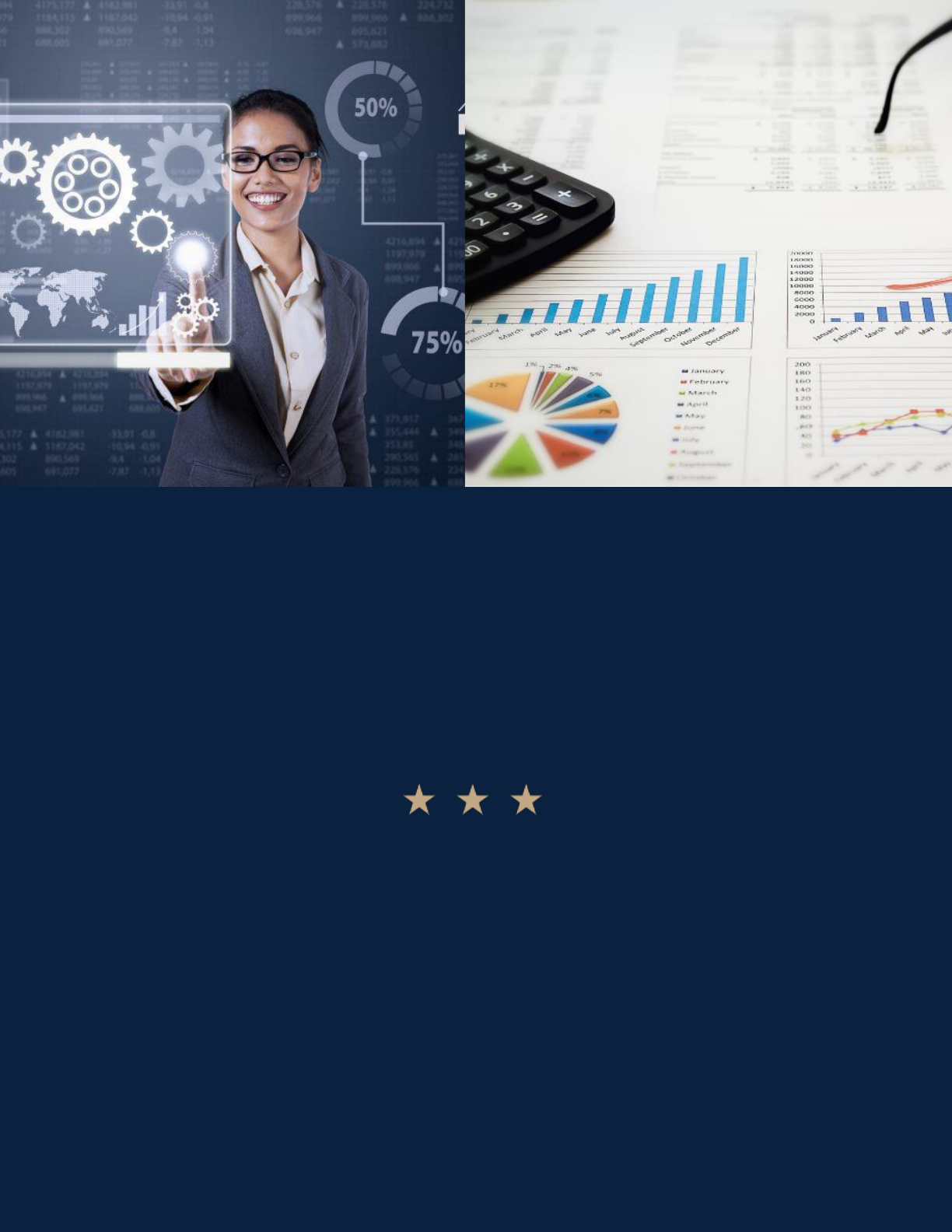
UNCLASSIFIED 34
Question Eight:
How can the Department utilize performance
management and evaluation data and data systems to
improve decision-making?
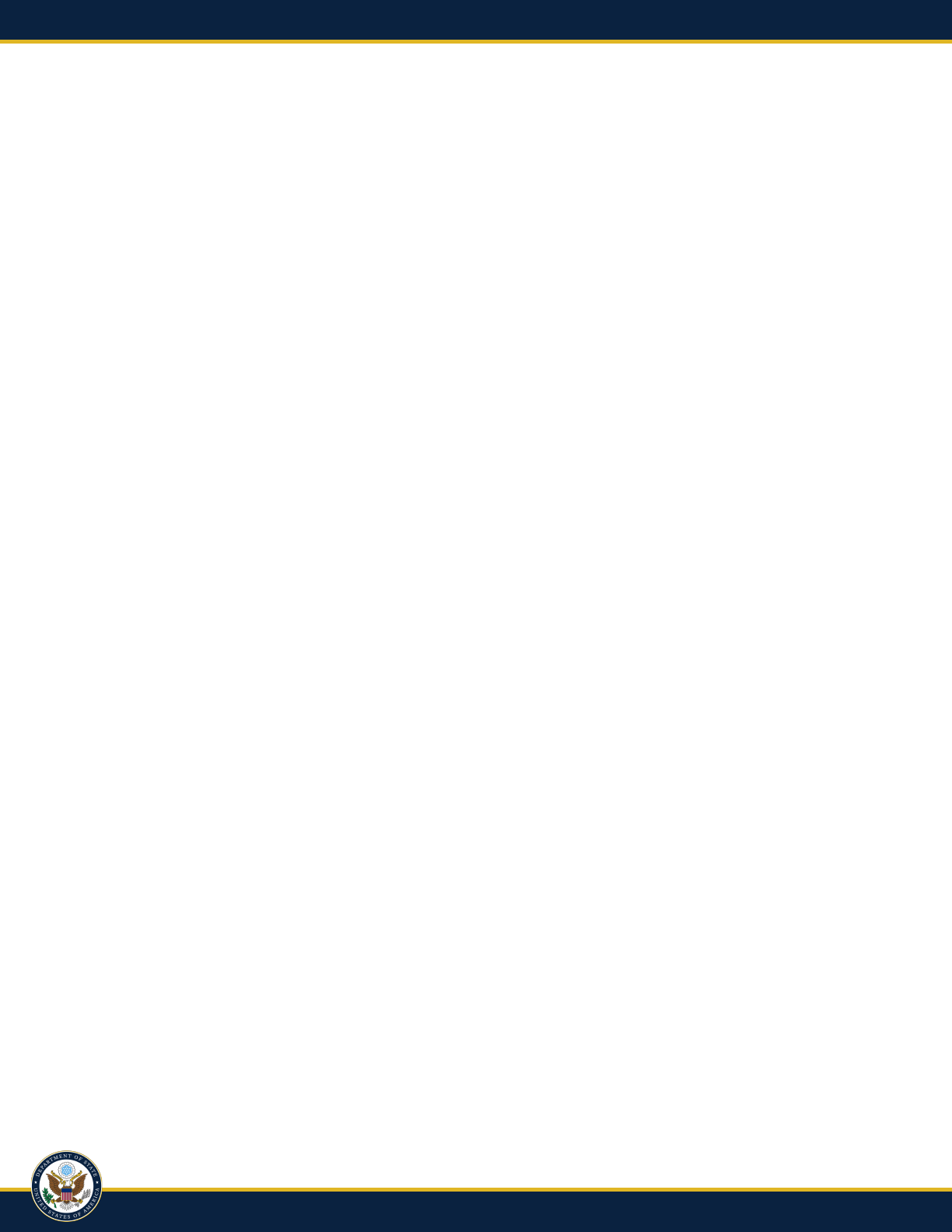
UNCLASSIFIED 35
8. How can the Department utilize performance management and
evaluation data and data systems to improve decision-making?
Performance management and evaluation data and data systems are the foundations for making
informed decisions. The following sub-questions will enable the Department to review the current
use of performance management and evaluation data and data systems and to identify best practices
in data-informed decision-making.
• 8.1. What are senior leaders’ expectations and leading practices for using performance
management and evaluation data and data systems in decision-making?
• 8.2. How widely used are data systems across the Department as part of performance
management and evaluation activities that inform operational and policy decisions?
• 8.3. How do organizational units in the Department integrate performance management and
evaluation data and analytics into their decision-making, and has this integration been
successful?
• 8.4. What are leading practices from other federal agencies, international organizations,
NGOs, and/or the private sector in utilizing performance management and evaluation data
that could be applied to the Department to enable data-informed decision-making?
Evidence Gathering Activities: Activities proposed to gather data to answer the sub-questions
include a desk review of prior studies and internal data, supplemented by key informant interviews,
focus groups, a survey, process mapping, and a peer review panel. In many cases, this evidence-
gathering entails mutual collaboration and support, especially for interviews and survey-design.
8.1 What are senior leaders’ expectations and leading practices for using performance management
and evaluation data and data systems in decision-making? Activities for this sub-question will focus
on what senior leadership expectations are for using performance and evaluation data by examining
reports and guidance, complemented by interviews and focus group discussions. The Department
will conduct the initial document review of existing reports, including relevant bureau inspections
and guidance, and consider other means of primary data collection including interviews and survey
design.
8.2. How widely used are data systems across the Department as part of performance management
and evaluation activities that inform operational and policy decisions? Activities for this sub-
question will focus on how data systems are used to support performance management and
evaluation. This analysis will include process mapping, document review, and a case study approach
that draws extensively on the Department’s internal data catalog.
8.3. How do organizational units in the Department integrate performance management and
evaluation data and analytics into their decision-making, and has this integration been successful?
Activities for this sub-question will focus on use of performance and evaluation data and analytics
and how this use has benefited bureau operations across the Department and will identify internal
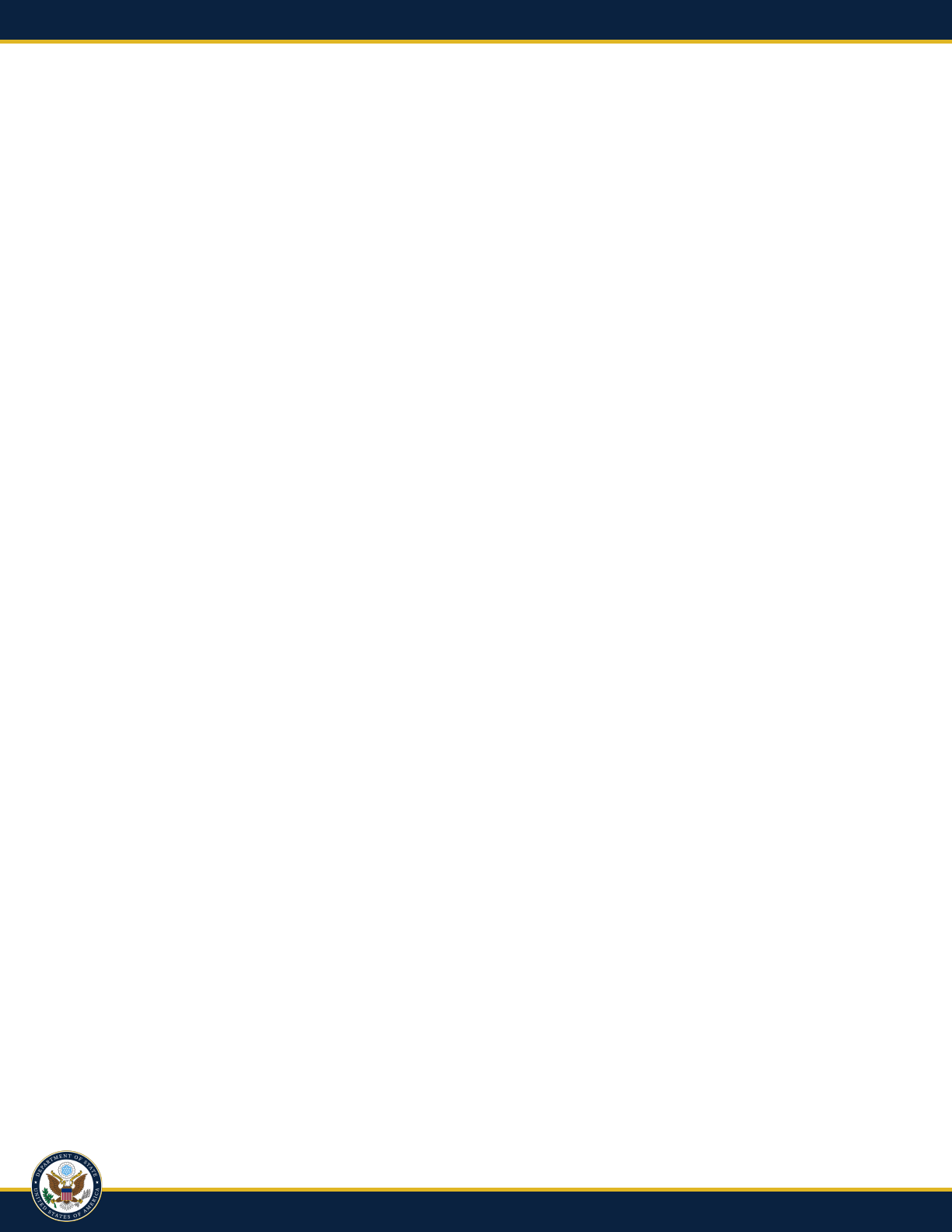
UNCLASSIFIED 36
leading practices using existing survey data complemented by interviews and focus group
discussions.
8.4. What are leading practices from other federal agencies, international organizations, NGOs,
and/or the private sector in utilizing performance management and evaluation data that could be
applied to the Department to enable data-informed decision-making? Activities for this sub-question
will focus on the identification of external leading practices in data-informed decision-making using
existing reports, case study, and a peer review approach. Staff will review prior reports for lessons
learned and ideas on research design, but case study research design and process design for a peer
review engagement will require collaborative support.
Data, Tools, and Methods: The Department will look at case studies that examine how
performance and evaluation data can improve decision-making in resource planning for diplomatic
engagement and foreign assistance, while upholding science and data integrity principles. Sub-
question teams anticipate collecting a combination of internal and external leading practices
including prior research, existing internal datasets, and primary qualitative and quantitative data on
data practice and systems.
Challenges and Mitigation Strategies: Challenges include gaining fuller awareness of existing data
and capabilities; non-uniformity in data structures, usage, systems across bureaus; and inherent
complexity of resource decision-making processes. Mitigation strategies include a wide-ranging
research process to identify datasets and systems; examination of existing data; and enterprise-wide
messaging and education about the purpose and benefits of using performance management and
evaluation data.
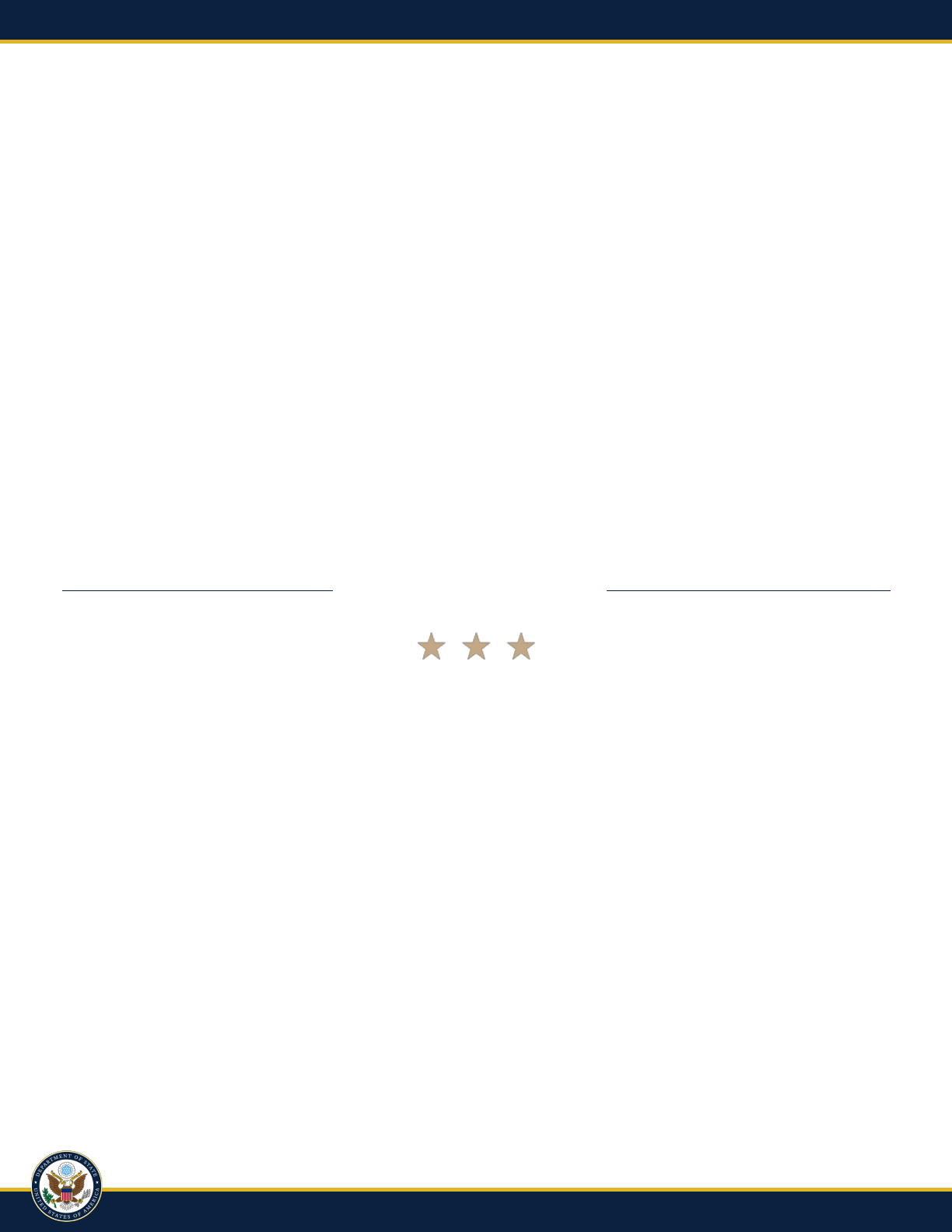
UNCLASSIFIED 37
APPENDIX
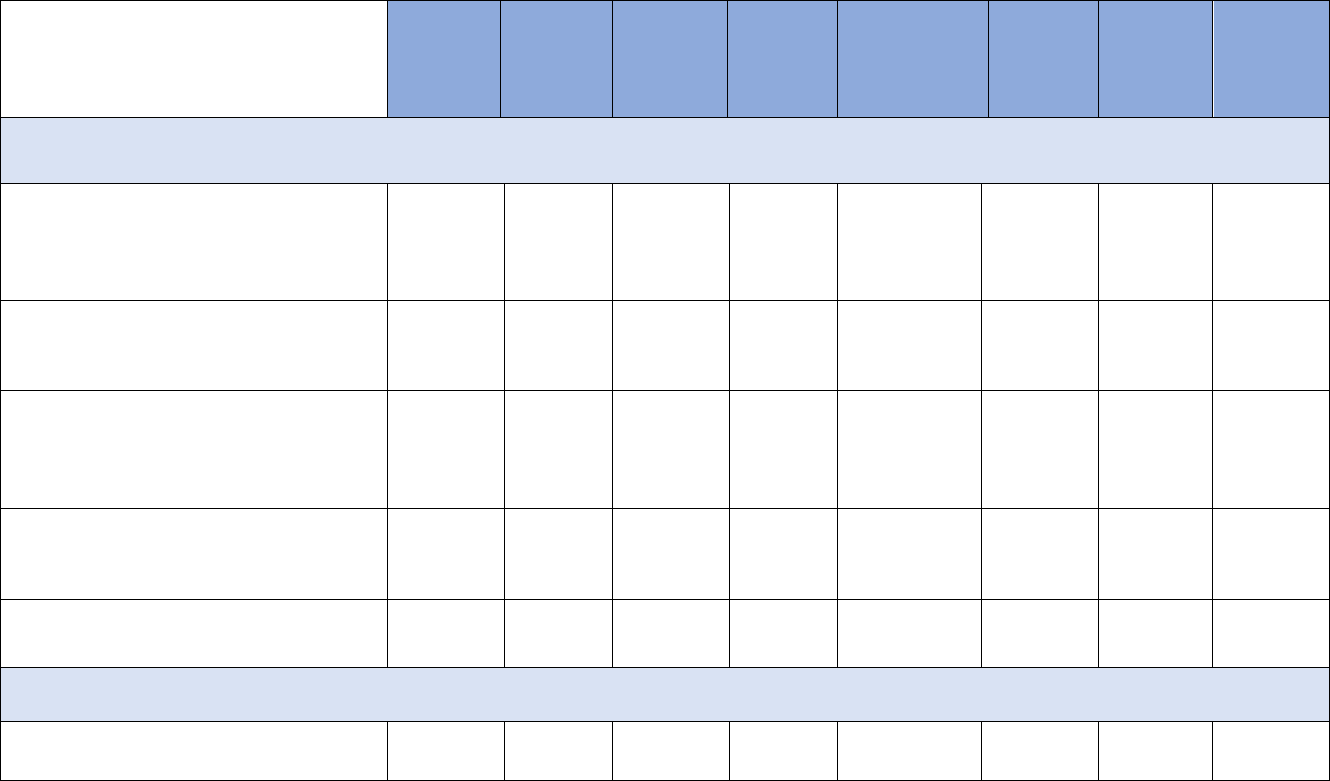
38
APPENDIX A: LEARNING AGENDA ALIGNMENT TO 2022-2026 DEPARTMENT OF
STATE AND USAID JOINT STRATEGIC PLAN
Strategic Objectives
Question 1
Effective
Diplomatic
Interventions
Question 2
Foreign
Assistance
Effectiveness
&
Sustainability
Question 3
Climate
Change
Question 4
Emergency
Response
Question 5
Global
Disinformation
Question 6
Citizen &
Customer
Service
Question 7
Safe & Secure
Work
Environment
Question 8
Data for
Decision-
Making
Goal 1: Renew U.S. leadership and mobilize coalitions to address the global challenges that have the greatest impact on American’s security and well-
being.
1.1 Strengthen global health security, combat
infectious disease threats, and address priority
global health challenges through bilateral
engagement and within multilateral fora.
(Joint)
X
X
X
X
1.2 Secure ambitious climate mitigation and
adaptation outcomes, including supporting
effective Paris Agreement implementation.
(Joint)
X
X
X
1.3 Reinvigorate U.S. humanitarian leadership
and provide lifesaving protection and
assistance in response to international disasters
and humanitarian crises overseas. (Joint)
X
X
X
1.4 Revitalize U.S. alliances and partnerships to
prevent, deter, and resolve conflicts and
address international security challenges.
(Joint)
X
X
X
X
X
1.5 Enhance foreign publics’ understanding of
and support for the values and policies of the
United States. (Joint)
X
X
X
Goal 2: Promote global prosperity and shape an international environment in which the United States can thrive.
2.1 Promote a global economy that creates
opportunities for all Americans. (Joint)
X
X
X
X
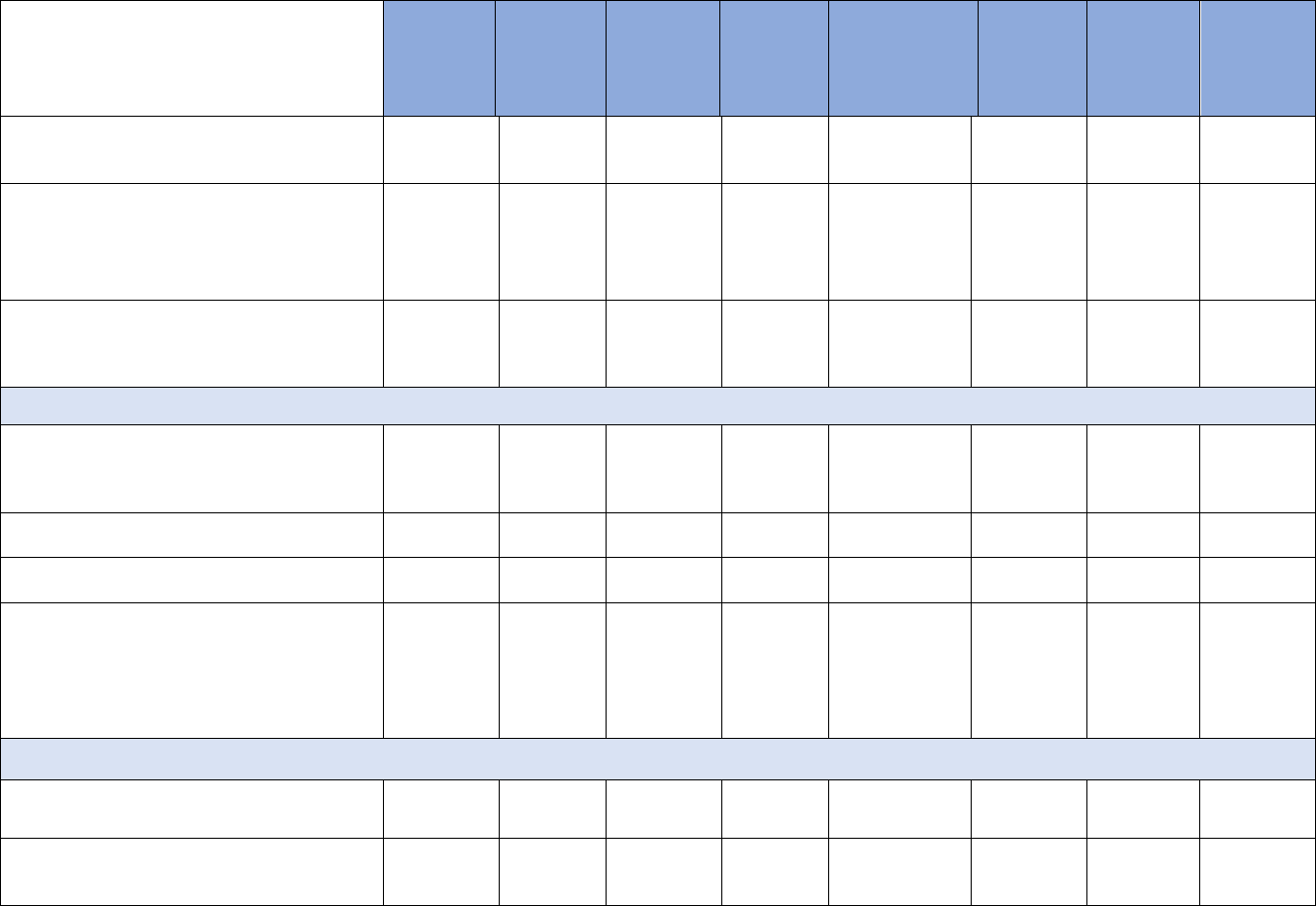
39
Strategic Objectives
Question 1
Effective
Diplomatic
Interventions
Question 2
Foreign
Assistance
Effectiveness
&
Sustainability
Question 3
Climate
Change
Question 4
Emergency
Response
Question 5
Global
Disinformation
Question 6
Citizen &
Customer
Service
Question 7
Safe & Secure
Work
Environment
Question 8
Data for
Decision-
Making
2.2 Support inclusive and sustainable
economic growth and opportunity for
communities around the globe. (Joint)
X
X
X
X
2.3 Support U.S. technological leadership,
strengthen competitiveness, and enhance and
protect the U.S. innovation base while
leveraging technology to improve lives around
the world. (Joint)
X
X
X
X
2.4 Strengthen U.S. and global resilience to
economic, technological, environmental, and
other systemic shocks. (Joint)
X
X
X
X
X
X
X
Goal 3: Strengthen democratic institutions, uphold universal values, and promote human dignity.
3.1 Promote good governance and defend
strong, accountable, and resilient democracies
that deliver for their citizens. (Joint)
X
X
X
X
X
3.2 Advance equity, accessibility, and rights for
all. (Joint)
X
X
X
X
3.3 Prevent, expose, and reduce corruption.
(Joint)
X
X
X
X
3.4 Promote a safe, humane, and orderly
immigration and asylum system, address the
root causes of irregular migration
collaboratively with our partners, and enhance
protections for refugees and displaced persons.
(Joint)
X
X
X
X
X
Goal 4: Revitalize the diplomatic and development workforce and institutions.
4.1 Build and equip a diverse, inclusive,
resilient, and dynamic workforce.
X
X
4.2 Modernize IT and leverage data to inform
decision-making and support mission delivery.
(Joint)
X
X
X
X
X

40
Strategic Objectives
Question 1
Effective
Diplomatic
Interventions
Question 2
Foreign
Assistance
Effectiveness
&
Sustainability
Question 3
Climate
Change
Question 4
Emergency
Response
Question 5
Global
Disinformation
Question 6
Citizen &
Customer
Service
Question 7
Safe & Secure
Work
Environment
Question 8
Data for
Decision-
Making
4.3 Protect our personnel, information, and
physical infrastructure from 21st century
threats. (Joint)
X
X
X
X
Goal 5: Serve U.S. Citizens around the world and facilitate international exchange and connectivity.
5.1 Support and serve American citizens
traveling or residing abroad. (State)
X
X
5.2 Advance U.S. interests by facilitating
legitimate travel to and from the United States.
(State)
X
X
